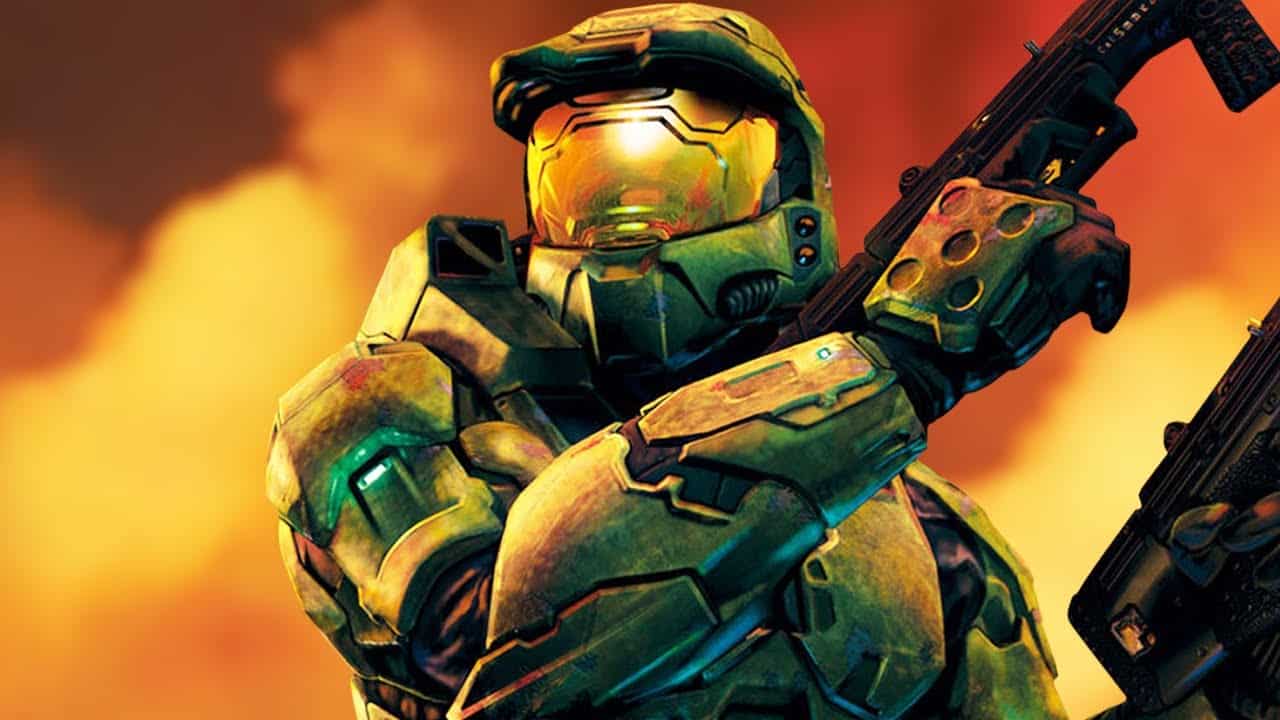The transition between the 5th and 6th console generations stands as one of the most significant leaps in technology. Not only did gamers have the launch of the PlayStation 2 to look forward to (with an already impressive built-in user base and backward compatibility available on day one), Nintendo and Microsoft would launch their own now-legendary consoles in the fourth quarter of 2001. Microsoft’s entry into the world of console gaming was a completely unexpected play much like Sony’s was back in 1995. And, right out of the gate, the console would have one of the best killer apps of all time in the incredible Halo: Combat Evolved, one of the top games of the 2000s or any other decade.
As the decade drew on, the clear winner of the 6th console generation would end up being the PlayStation 2 (thanks to the original PlayStation‘s victory in the 5th console generation). However, not to be outdone by their primary competitors, Microsoft and Nintendo would have their own significant tricks up their sleeves for their 7th-generation hardware. While Microsoft would continue to blur the lines between PC and console gaming and make online multiplayer ubiquitous with home consoles with the Xbox 360, Nintendo would absolutely smash the competition with the casual-friendly Nintendo Wii and its novel motion controls. Along the way, gamers were treated to what are now some of the most important and iconic titles in the history of the medium.
50. Final Fantasy X
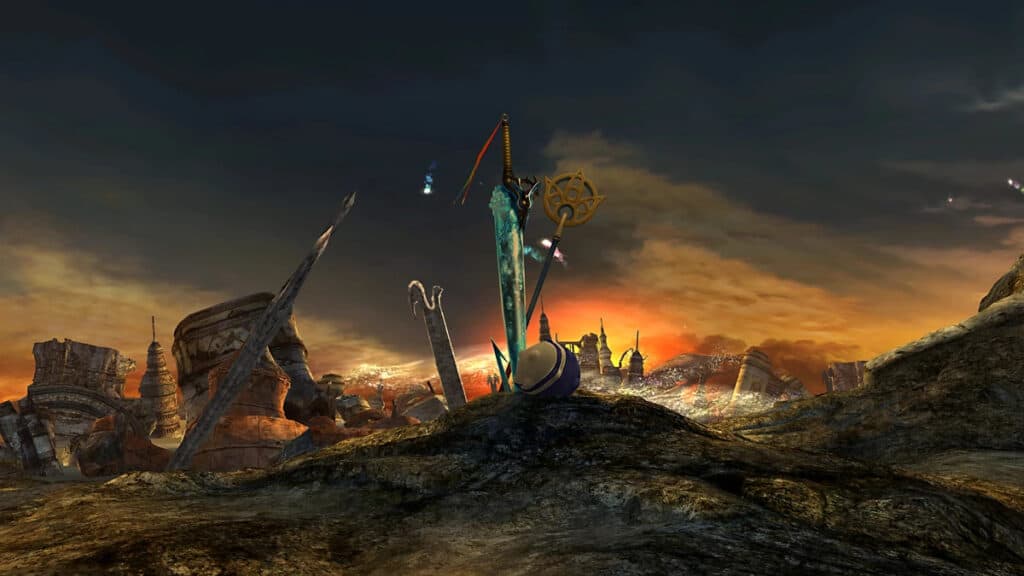
- Release Date — December 17, 2001
- Release Platform — PlayStation 2
- Metacritic Score — 92 (Universal Acclaim)
As the first next-gen 3D Final Fantasy, Final Fantasy X makes a strong impression on longtime fans and newcomers. The title represents a massive leap in graphical quality over the PlayStation trilogy of mainline entries. And, on top of its excellent presentation on the PlayStation 2, Final Fantasy X features a “back-to-basics” approach to the gameplay that calls to mind the best of the series’ early entries. Ultimately, this lets the incredible story that unfolds throughout the adventure take center stage.
49. Rock Band

- Release Date — November 20, 2007
- Release Platform — Xbox 360, PlayStation 3, Wii
- Metacritic Score — 92 (Universal Acclaim)
Guitar Hero had taken over dorm rooms and basements across the country by 2007, so it only makes sense for original creators Harmonix to expand the festivities to include a full band. Adding in bass, drums, and vocals would prove to be a potent mix, making Rock Band one of the must-have titles of the year, even with its hefty price tag for the edition including all the plastic peripherals. That Rock Band is still a staple in many people’s homes for get-togethers, is a testament to the immediate appeal of Harmonix’s classic rhythm game.
48. World of Warcraft
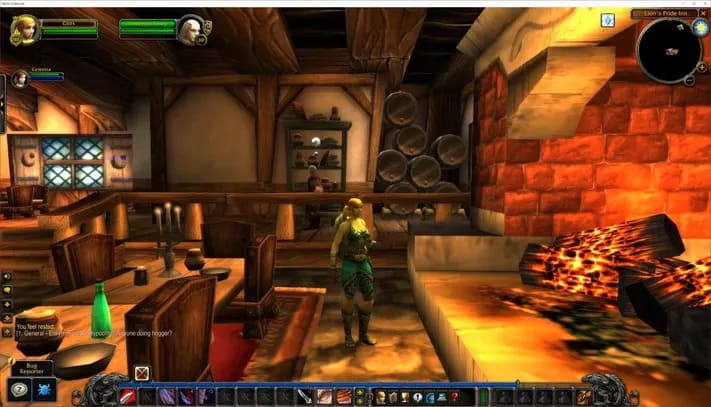
- Release Date — November 23, 2004
- Release Platform — PC
- Metacritic Score — 93 (Universal Acclaim)
It might be hard to believe, but World of Warcraft is going to be celebrating its 20th anniversary this year. Back in 2004, the thought of Blizzard’s popular RTS series making the shift to the then-new MMORPG genre was an enticing prospect. However, no one likely knew just how much of a phenomenon the game would become. Two full decades later, World of Warcraft is still going strong thanks to its intuitive gameplay loop, challenging yet fun quest design, and potential for excellent cooperative play and hours spent getting lost in the world of Azeroth.
47. SoulCalibur II
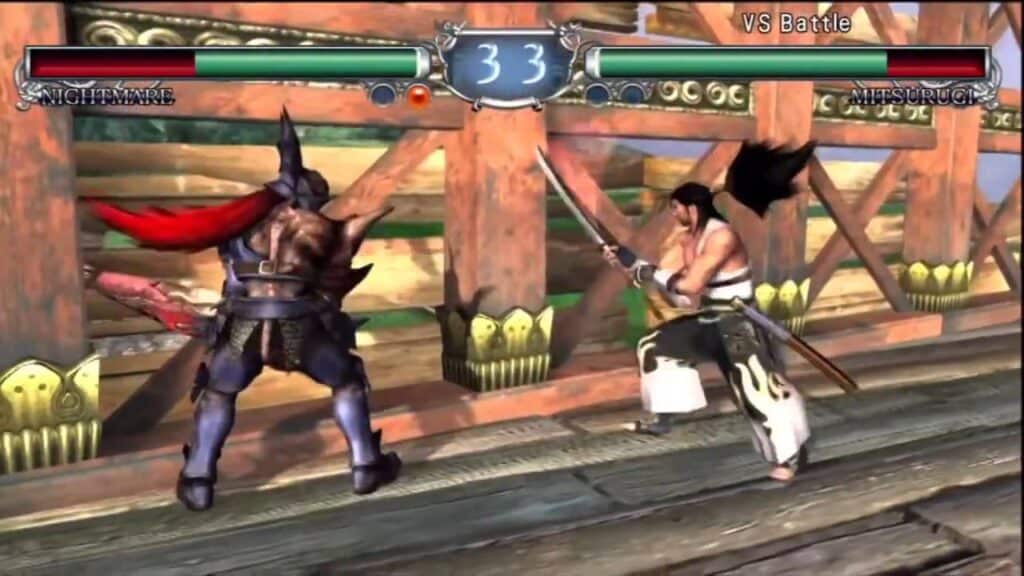
- Release Date — August 27, 2003
- Release Platform — GameCube, PlayStation 2, Xbox
- Metacritic Score — 93 (Universal Acclaim)
The original SoulCalibur would end up being one of the Dreamcast’s must-have titles, showcasing that 1:1 arcade ports of 3D fighters were now possible on the new generations of systems. SoulCalibur II takes things even further by having three separate versions across each of the main consoles of the time. Each version features its own signature character to help differentiate it, but at their core, all three versions of SoulCalibur II are the same excellent fighting game that still stands as the best entry in Namco’s long-running franchise.
46. Fallout 3
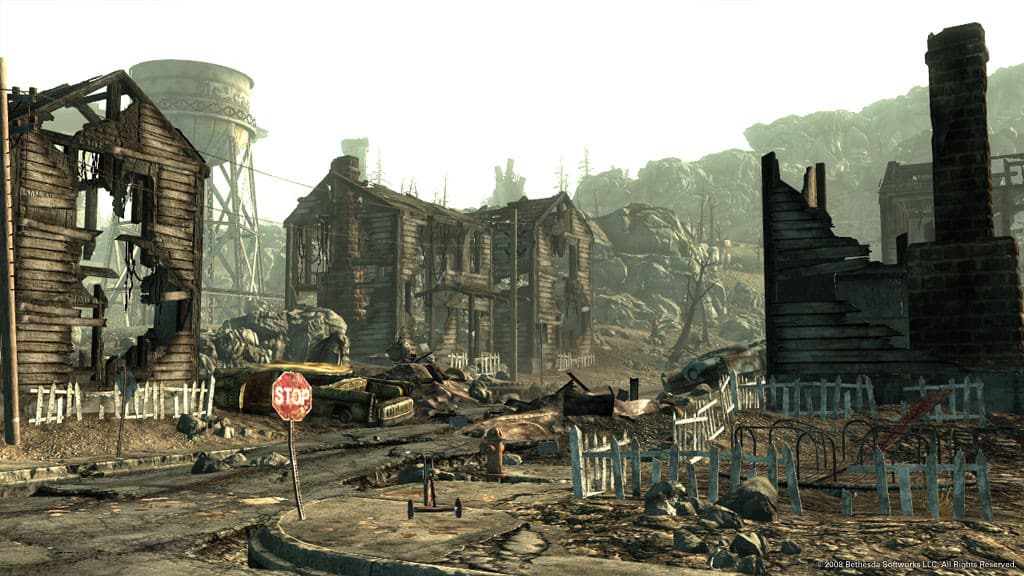
©Screenshot from Fallout 3 – License
- Release Date — October 29, 2008
- Release Platform — Xbox 360, PlayStation 3, PC
- Metacritic Score — 93 (Universal Acclaim)
After a decade spent in limbo with the rights to the IP up in the air, Bethesda Softworks stepped in and purchased the rights to Fallout in 2007 after beginning development on the game that would become Fallout 3. Unlike the previous entries in the series, Fallout 3 transplants the player into the apocalypse using the same first-person perspective that the studio is famous for using in its open-world RPGs. As it turns out, mixing The Elder Scrolls formula with the atmosphere and writing of Fallout would prove to be a potent combination, earning the title Game of the Year honors from several publications and continuing to rank Fallout 3 high up on “best of all time” lists.
45. Okami
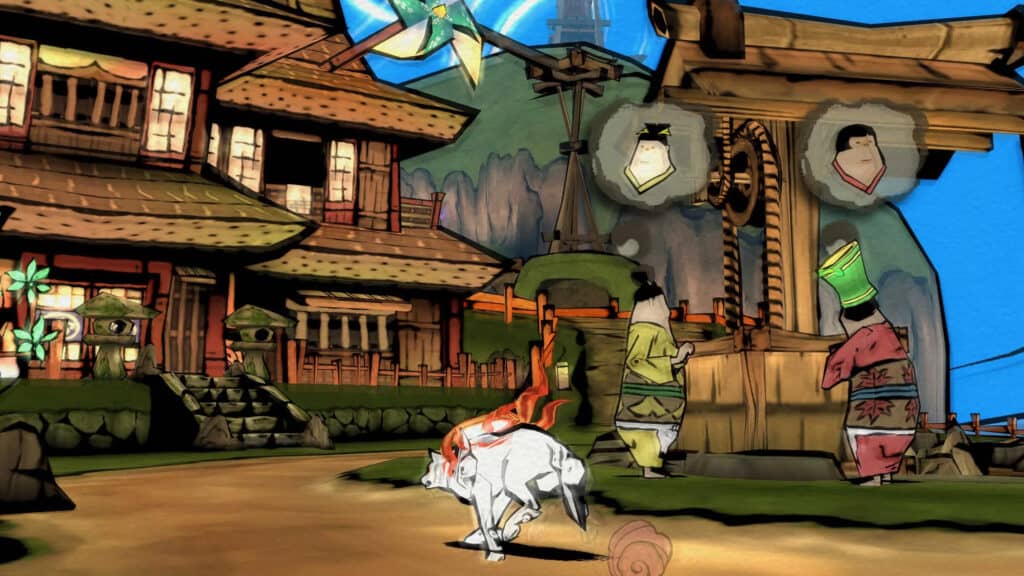
- Release Date — September 19, 2006
- Release Platform — PlayStation 2
- Metacritic Score — 93 (Universal Acclaim)
Capcom’s charming and beautiful Zelda-like Okami is one of the hidden gems from the PlayStation 2. Not only that, it’s quite possibly one of the best action-adventure games of all time. What sets the game apart is its Japanese setting and use of a traditional Sumi-e ink painting art style. As a result, the title pays homage to the culture and ancestry of the region. On top of its breathtaking presentation, though, Okami features excellent writing, fun and snappy combat, and some truly inventive and clever puzzle-solving.
44. Street Fighter IV
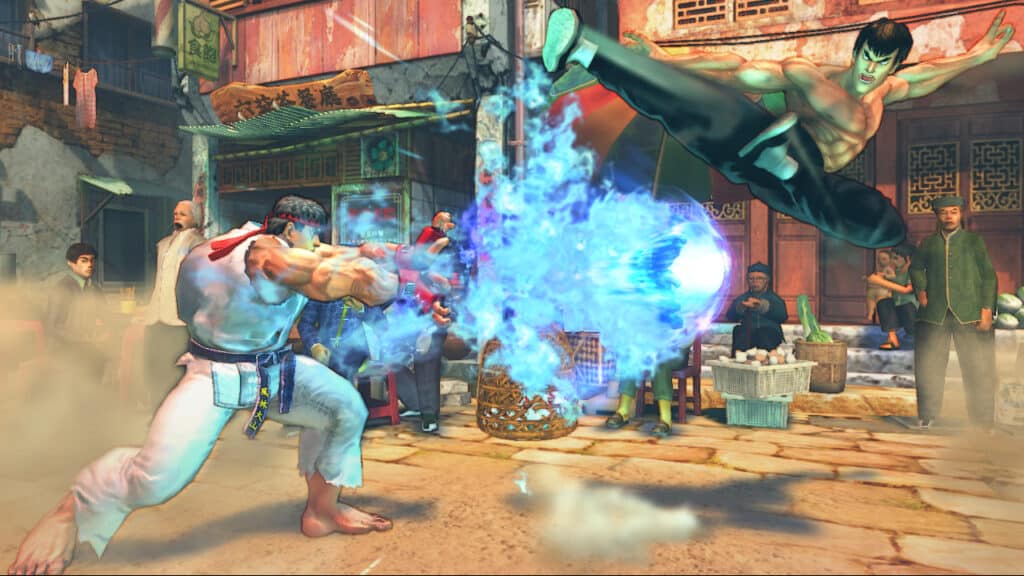
- Release Date — February 17, 2009
- Release Platform — Xbox 360, PS3
- Metacritic Score — 93 (Universal Acclaim)
The Street Fighter series is one that has always been synonymous with 2D pixel art graphics thanks to most people’s introduction to the franchise coming about as a result of Street Fighter II. Before the release of Street Fighter IV, early attempts at making Street Fighter 3D had failed, so the eyes were on Capcom to see if they could pull it off. Not only is Street Fighter IV one of the best-looking games in the franchise, absolutely nailing its transition to 3D character models, it also has some impeccably balanced fighting gameplay and still hosts a thriving online competitive community all these years later.
43. Braid
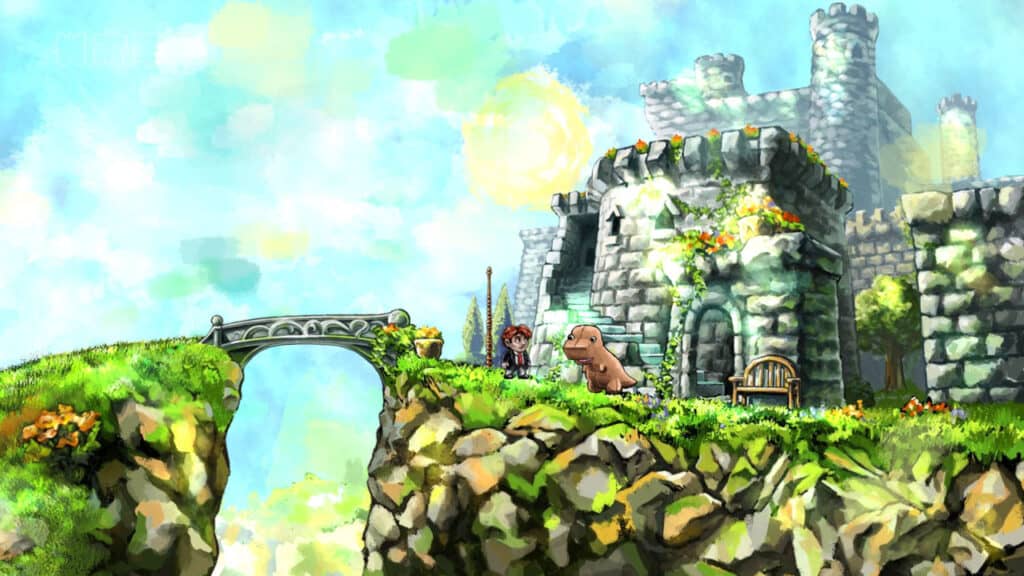
- Release Date — August 6, 2008
- Release Platform — Xbox 360
- Metacritic Score — 93 (Universal Acclaim)
One of the definitive games of the 2000s is also one that came completely out of left field. During a time when the term “indie game” was practically unheard of, Microsoft took a chance on a little title known as Braid for its fledgling Xbox Live Arcade service. In the process, the move inadvertently kicked off a whole new generation of indie creators who had great ideas for games but maybe lacked the budget necessary to secure publishing. Braid is an excellent puzzle platformer with some incredible jaw-dropping moments. Ultimately, though, it’s the game’s impact on the industry and opening the floodgates for other indie developers that makes it so important.
42. Unreal Tournament
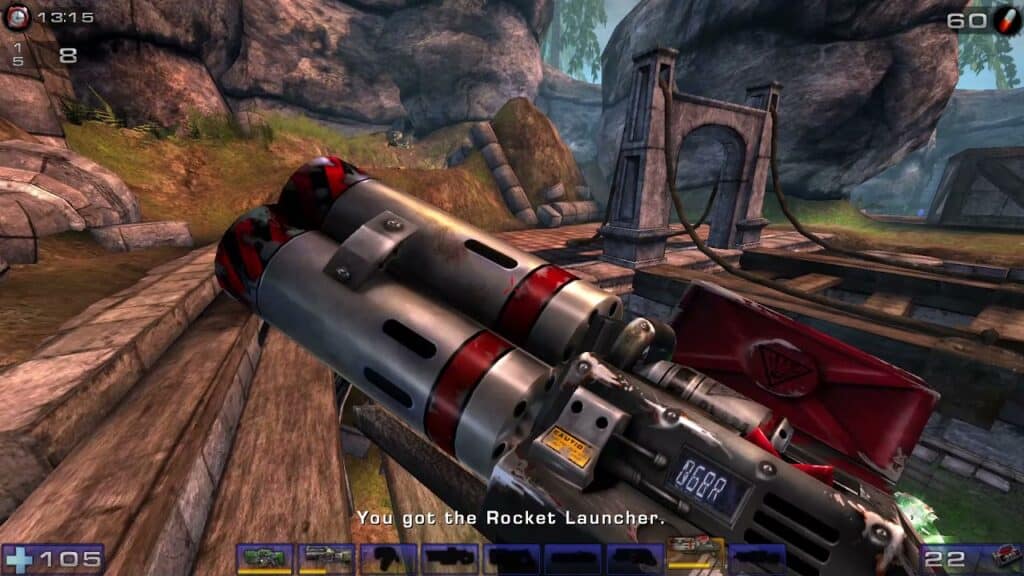
- Release Date — March 16, 2004
- Release Platform — PC
- Metacritic Score — 93 (Universal Acclaim)
The re-release of Unreal Tournament in 2004 stands as one of the most fun multiplayer experiences to be had within an arena shooter, showcasing the brilliance of the title when stacked up against competitors like Quake III Arena (which is no slouch either). What makes Unreal Tournament the best of the early arena shooters is its frantic sense of speed and near-perfect balance. Instead of having clear-cut winners, most teams trade slews of kills before one ekes out a last-minute victory.
41. Super Smash Bros. Brawl
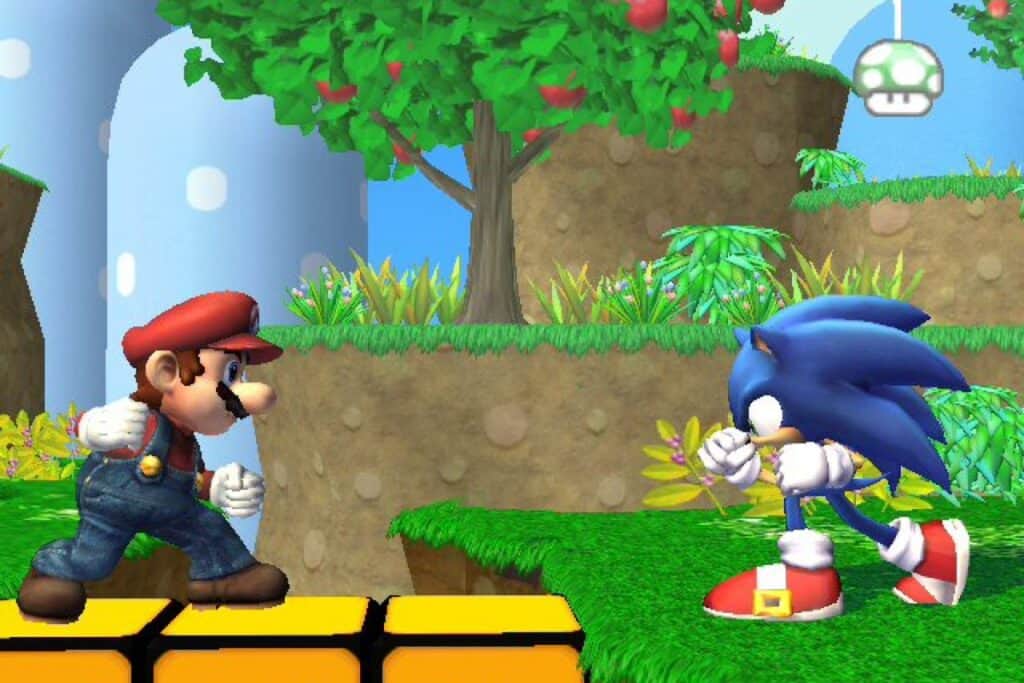
- Release Date — March 9, 2008
- Release Platform — Wii
- Metacritic Score — 93 (Universal Acclaim)
A full 10 years before the release of Super Smash Bros. Ultimate on Nintendo Switch, the series’ Wii entry would blow gamers’ minds thanks to the inclusion of several iconic non-Nintendo characters in its roster. Along with Mario’s rival Sonic, Super Smash Bros. Brawl would include Solid Snake from Metal Gear, opening up the possibility for even more third-party characters to find their way to the series in future entries. Thanks to the bold moves that Brawl takes, the Super Smash Bros. series is now one of the best museums of gaming history, pulling in characters from across the entire medium’s history to duke it out in arena battles.
40. Virtua Fighter 4
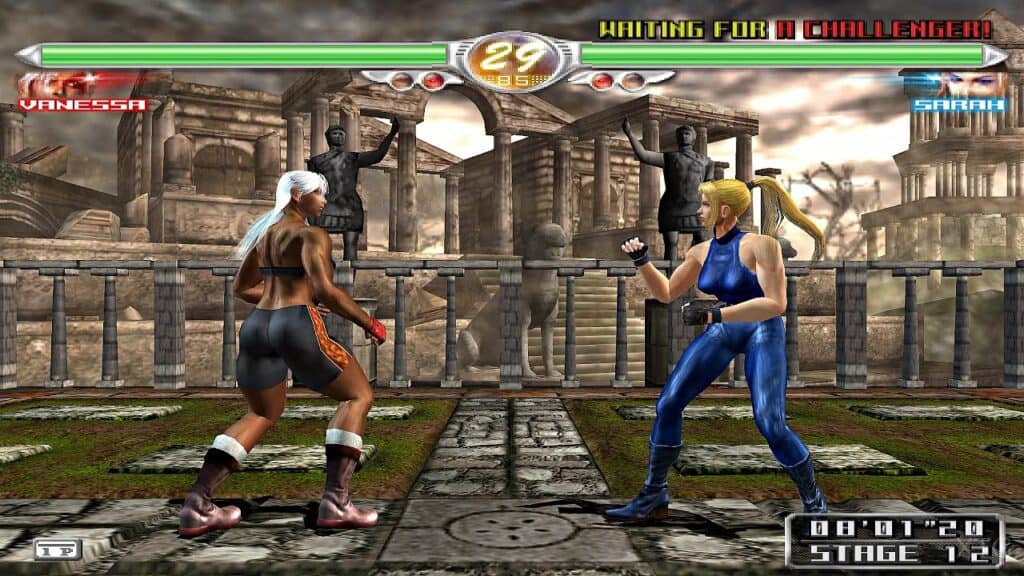
- Release Date — March 17, 2002
- Release Platform — PlayStation 2
- Metacritic Score — 94 (Universal Acclaim)
The demise of the Dreamcast would lead to Sega becoming strictly a software publisher and exiting the hardware market, and one of the first of the company’s games to make it to a competing system would be Virtua Fighter 4. Sega’s Virtua Fighter series has long been known as one of the most mechanically complex and deep fighters available, and Virtua Fighter 4 on the PS2 is perhaps one of the most rewarding challenging fighting games available on the system. Especially in the early days of the PS2’s life cycle, Virtua Fighter 4 making it onto the console was a nice contrast to the relatively amateur-friendly Tekken series.
39. Sid Meier’s Civilization IV
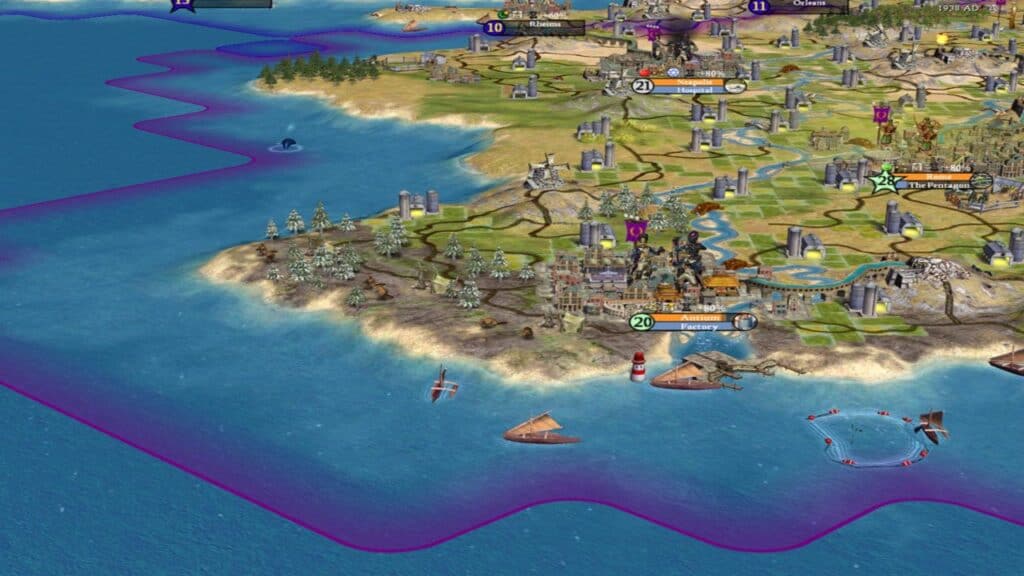
- Release Date — October 25, 2005
- Release Platform — PC
- Metacritic Score — 94 (Universal Acclaim)
The Civilization series can be one of the most rewarding strategy games to play thanks to being able to watch your nation grow and prosper in competition with other sovereign entities, giving players multiple different paths to victory that can occasionally completely avoid any violence. Prior to the launch of Civilization V, Civ IV would scratch the RTS itch for millions of PC gamers and become the go-to version of the game within the franchise, with many people continuing to play Civilization IV over Civ V until the eventual release of the excellent Civilization VI. With tons of modes, plenty of variables at play, and near-limitless potential for strategic victory, Civilization IV is one of the greatest strategy games.
38. Star Wars: Knights of the Old Republic
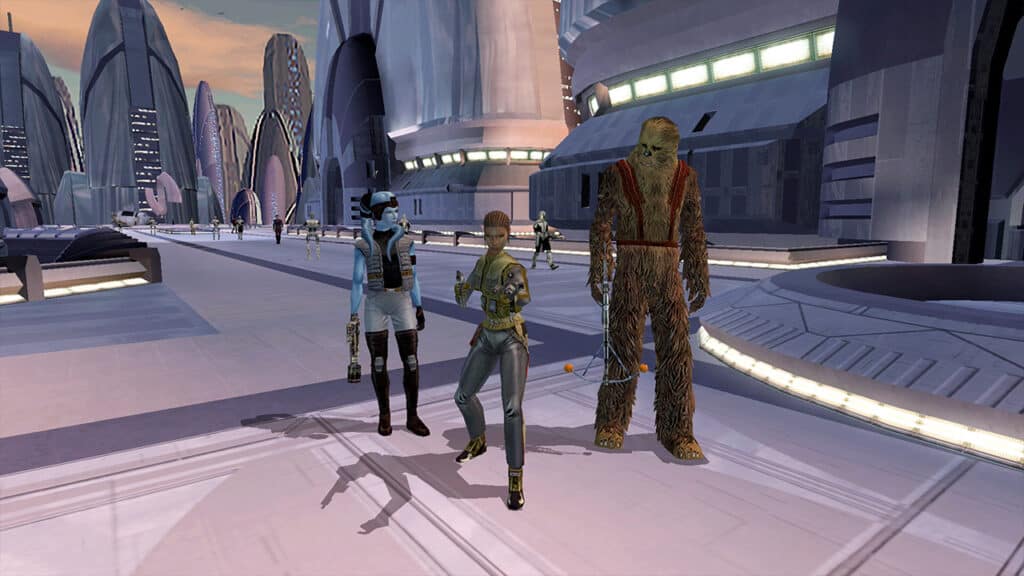
- Release Date — July 17, 2003
- Release Platform — Xbox
- Metacritic Score — 94 (Universal Acclaim)
BioWare’s success with the Dungeons & Dragons rule set and gameplay in the Baldur’s Gate series made them a natural fit for a Star Wars RPG utilizing the legendary pen-and-paper RPG’s mechanics, and Knights of the Old Republic ends up quite possibly being the greatest Star Wars game of all time in the developer’s hands. Not only does Knights of the Old Republic make players’ dreams of controlling a Jedi come true, but it also gives them the freedom to choose a Light or Dark Side path, with every choice that the player makes factoring into a complex morality system and impacting the game’s ending. And, of course, the game’s ending features one of the best twists in video game history.
37. God of War
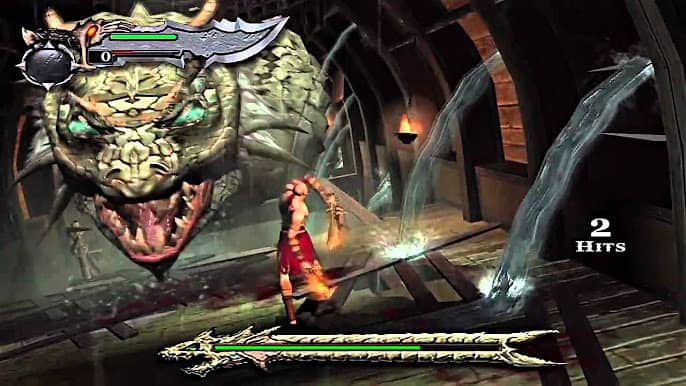
- Release Date — March 22, 2005
- Release Platform — PlayStation 2
- Metacritic Score — 94 (Universal Acclaim)
The original trilogy of God of War games begins with what is possibly the greatest introduction to their protagonist, Kratos, by having the player control the hero as he slays the infamous Hydra aboard a sinking Agean ship. The game’s references to and reverence for Greek mythology only continue from there, utilizing some of the most well-known and fantastical stories in fiction to create a larger-than-life adventure utilizing the character-action format. The game’s setting and story are one of the title’s main draws, but God of War‘s combat is also fluid, fast, and satisfying, with a lower skill floor for entry and a commendably high skill ceiling of mastery.
36. Metal Gear Solid 4: Guns of the Patriots

- Release Date — June 12, 2008
- Release Platform — PlayStation 3
- Metacritic Score — 94 (Universal Acclaim)
Although the Metal Gear Solid series would be forced to continue under Konami despite Kojima’s wishes against it, Metal Gear Solid 4: Guns of the Patriots is perhaps one of the few examples gamers have of a perfect conclusion to a series. Hideo Kojima’s swansong to the PlayStation 3 and the final game in the series he got to see fully finished pulls out all the stops to deliver the emotional and poignant conclusion to the tale of Solid Snake. Along the way, players are treated to some of the best implementations of the series’ trademark “Stealth-Action” gameplay, and it’s hard to imagine a more fitting send-off for one of gaming’s greatest heroes.
35. Call of Duty: Modern Warfare 2
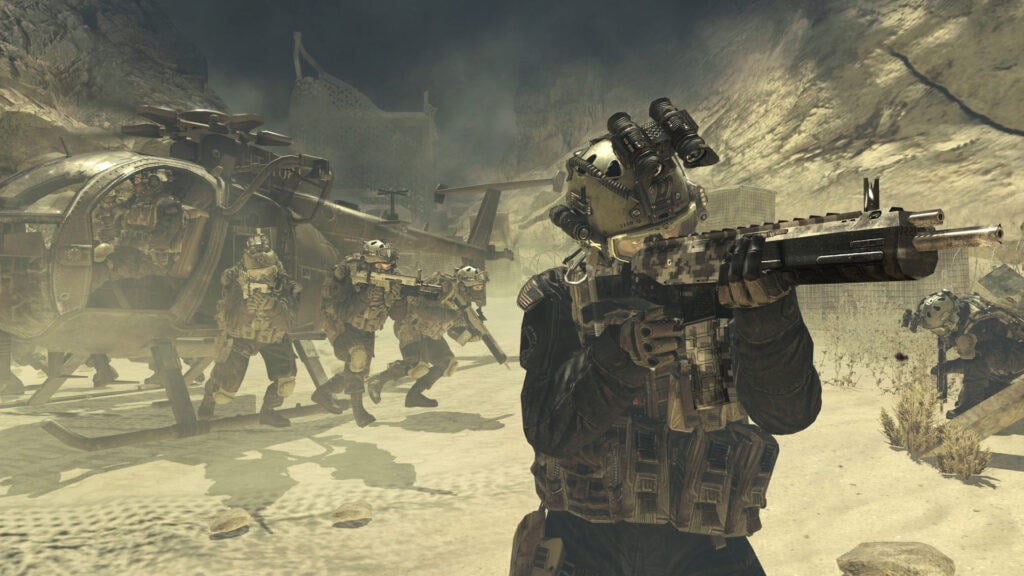
- Release Date — November 10, 2009
- Release Platform — Xbox 360, PS3, PC
- Metacritic Score — 94 (Universal Acclaim)
One of the main things that Call of Duty: Modern Warfare 2 illustrates is Infinity Ward’s genius when it comes to crafting unforgettable single-player campaigns in their first-person shooters. The first Modern Warfare already featured some of the greatest setpiece moments in a series known for them, but the sequel takes things a step further to include some truly breathtaking moments that make the player stop and think about the true horrors of war. Modern Warfare 2 might be a military first-person shooter, but it never revels in the atrocities of war or glorifies them, instead choosing to illustrate the very human cost that conflict has.
34. Metal Gear Solid 3: Subsistence
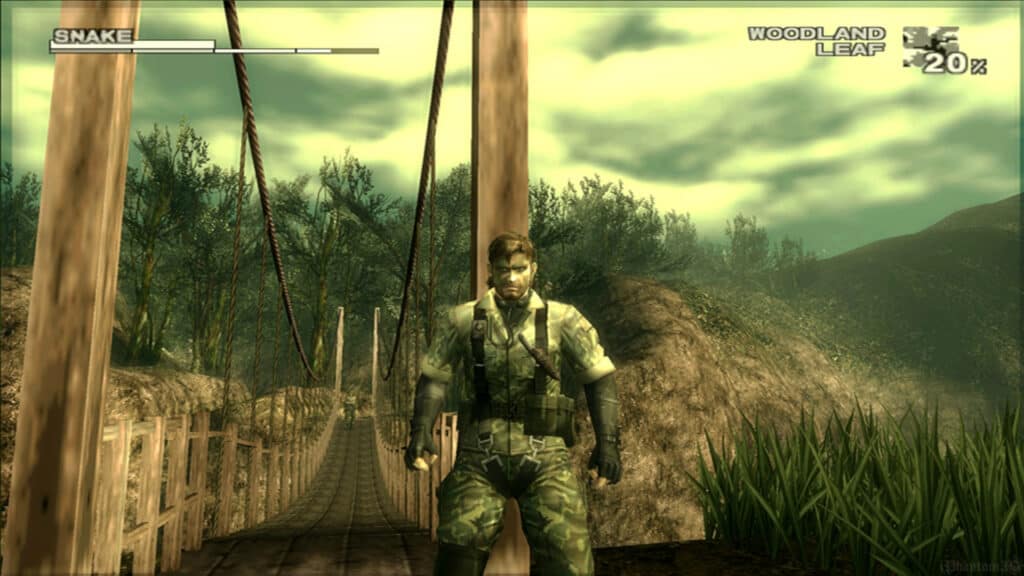
- Release Date — March 14, 2006
- Release Platform — PlayStation 2
- Metacritic Score — 94 (Universal Acclaim)
The initial release of Metal Gear Solid 3: Snake Eater would deserve to be on this list instead of Subsistence if it weren’t for the ways that this re-release enhances every aspect of the original game. Not only does Subsistence serve as a “director’s cut” of sorts for the greatest game in the Metal Gear Solid series, it also adds an online mode that would prove to be a massive hit and a perfect fit for Metal Gear Solid 3‘s gameplay. Between its incredible story and setting, pitch-perfect gameplay, and additional content cut from the original release, Subsistence is the best version of one of the best games in the PS2 library.
33. Burnout 3: Takedown
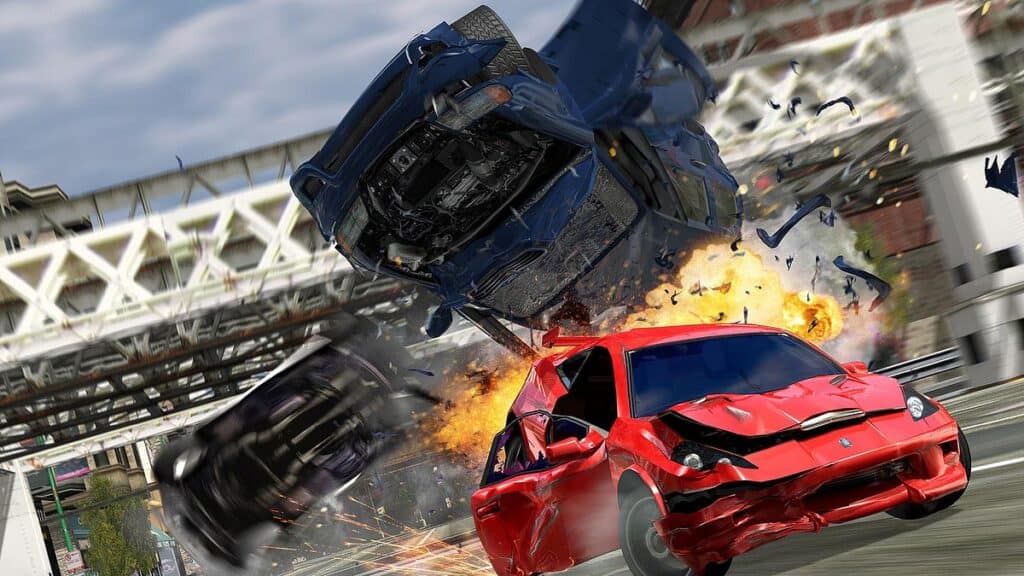
- Release Date — September 7, 2004
- Release Platform — Xbox, PlayStation 2
- Metacritic Score — 94 (Universal Acclaim)
After years spent playing second fiddle to simulation racing games, the arcade racer came back with a firey vengeance in the Burnout series. The best of the bunch is Burnout 3: Takedown, which features one of the best crash-replay systems of the franchise and displays the horrendous accidents that occur at top-speeds in all their twisted detail. The speed and tension of Burnout 3 make it feel like a tremendous crash could occur at any moment, and the game’s slow-motion replays make you almost wish that it would.
32. Resident Evil – CODE: Veronica
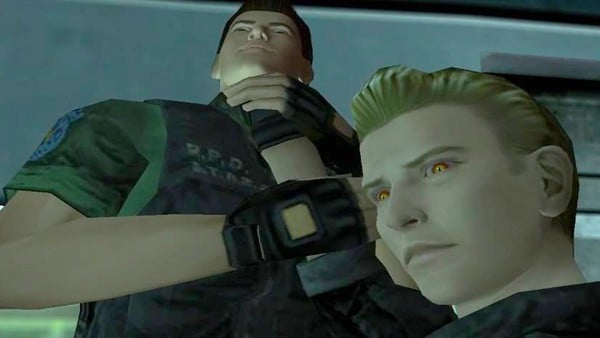
- Release Date — February 29, 2000
- Release Platform — Dreamcast
- Metacritic Score — 94 (Universal Acclaim)
What makes CODE: Veronica such an interesting entry in the Resident Evil franchise is its place as a transitory game for the series. The title bridges the classic tank controls and inventory management of the original trilogy on PlayStation with the full-3D environments and greater emphasis on action similar to the future entries in the series. Before fans got Resident Evil 4, CODE: Veronica showcased how well the Resident Evil series was suited for next-generation hardware. And, lest it be forgotten, the game has one of the series’ best stories and a supremely campy atmosphere.
31. Tom Clancy’s Splinter Cell: Chaos Theory
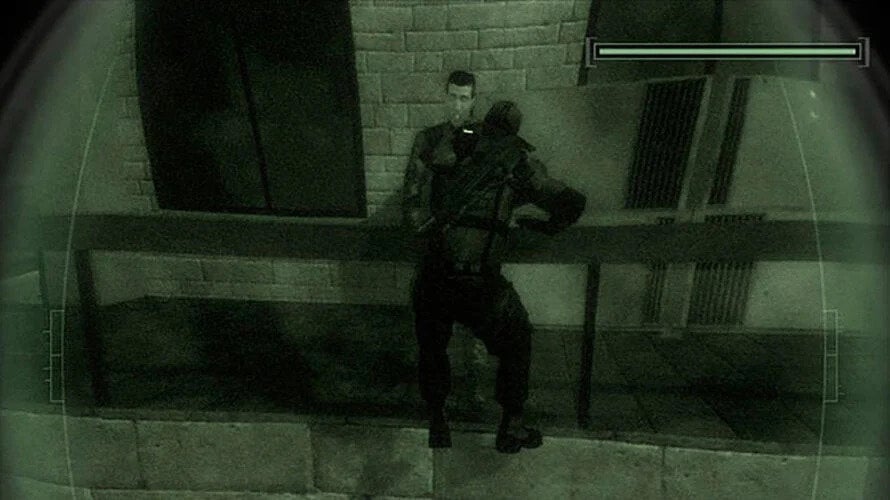
- Release Date — March 28, 2005
- Release Platform — Xbox
- Metacritic Score — 94 (Universal Acclaim)
Solid Snake is far from the only stealth hero in town, as Sam Fisher illustrates with the excellent initial trilogy of Splinter Cell games. The best of the first three games in Ubisoft’s spy-action franchise is the final entry, Chaos Theory, and both halves of its gameplay make it an all-time stealth classic. The single-player campaign features some of the best maps and gadgets to use in taking down entire squads of enemies without ever raising an alarm, while the multiplayer provides a compelling distraction with its hilariously entertaining games of cat-and-mouse against competitors.
30. Ninja Gaiden Black
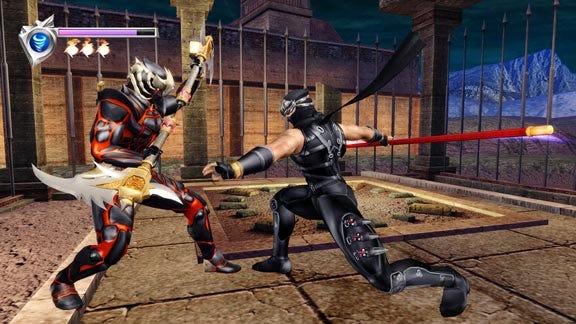
- Release Date — September 20, 2005
- Release Platform — Xbox
- Metacritic Score — 94 (Universal Acclaim)
Like Metal Gear Solid 3: Subsistence, the revival of the Ninja Gaiden franchise on Xbox would receive its own “director’s cut” of sorts with the excellent Ninja Gaiden Black just a year later. Black serves as arguably the definitive version of Ryu Hayabusa’s character-action revival, with the game’s difficulty balancing and subtle tweaks to the campaign making it far outshine the original. Ninja Gaiden is a brutally difficult game (like the originals on NES), but overcoming that challenge provides a sense of satisfaction unlike any other in the medium in the pre-Dark Souls world.
29. Halo 3
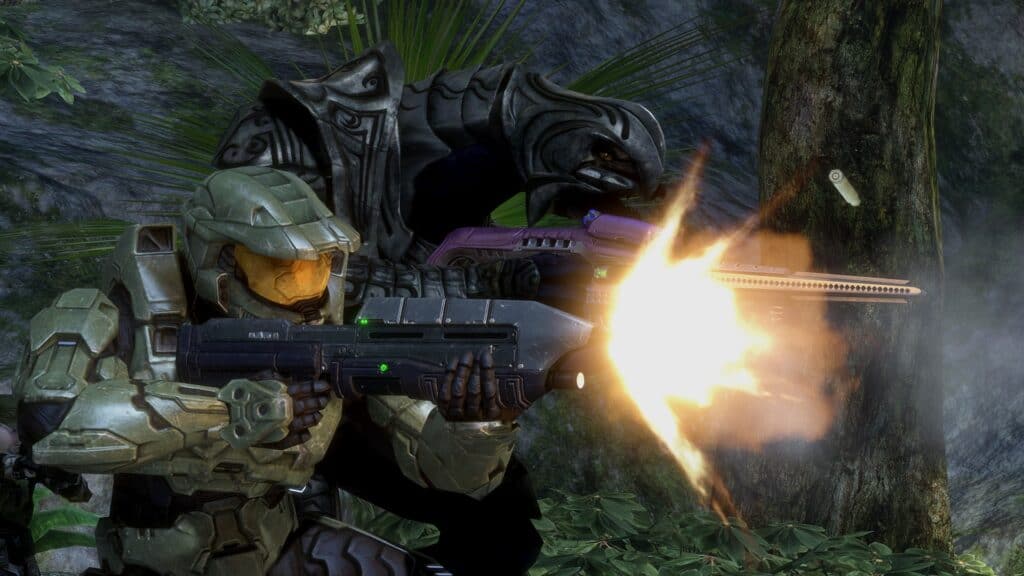
- Release Date — September 25, 2007
- Release Platform — Xbox 360
- Metacritic Score — 94 (Universal Acclaim)
The tagline for Halo 3 would urge players to “Finish the Fight”, and that’s precisely what Halo 3 accomplished so sufficiently prior to the series’ new tutelage under 343 Studios. For a time, Halo 3 represented the conclusion to one of the most important and impactful trilogies in gaming, seeing its massive 16-player skirmishes in multiplayer transition from LAN parties to Xbox Live in the time between the first Halo and Halo 3. The game’s multiplayer hits a series peak before Bungie’s work on Halo: Reach, and the campaign is a satisfying series of incredible action setpieces that hammer home the greatness of the Master Chief.
28. Call of Duty 4: Modern Warfare
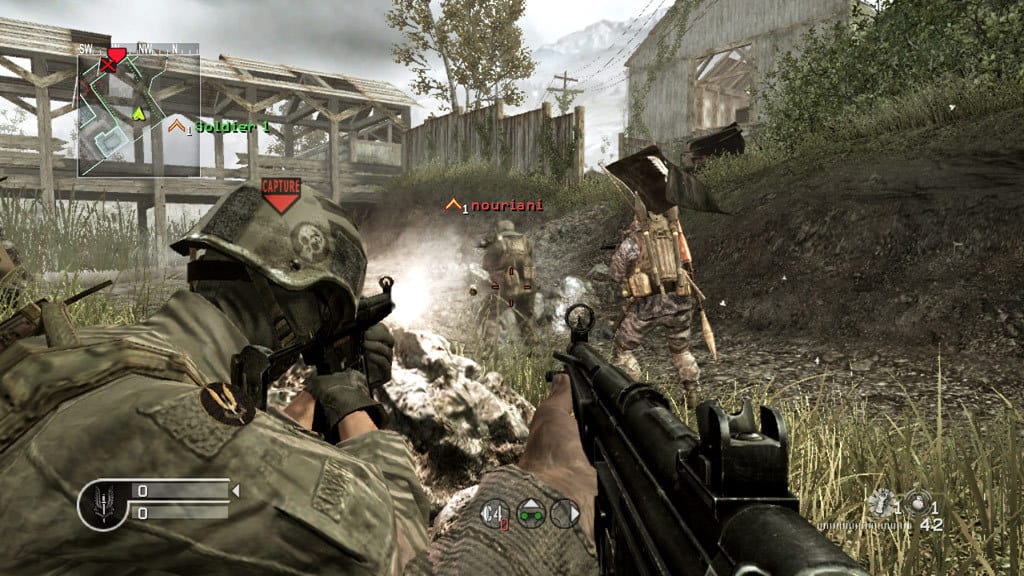
- Release Date — November 5, 2007
- Release Platform — Xbox 360, PS3, PC
- Metacritic Score — 94 (Universal Acclaim)
The brilliance of Call of Duty 4: Modern Warfare is in both of its gameplay halves being full-fledged experiences that can eat up hundreds of hours. Modern Warfare‘s single-player campaign is still the stuff of legend, sitting at or near the top in comparison to the single-player campaigns of almost every other modern FPS. Further, its multiplayer set the stage for the franchise to become one of the most popular IPs in existence, establishing the addictive and fast-paced nature of competitive online matches and utilizing some now-legendary maps that still find their way into modern Call of Duty games. Without Modern Warfare, it’s unlikely that Call of Duty would be as much of a household name as it is today.
27. The Elder Scrolls IV: Oblivion
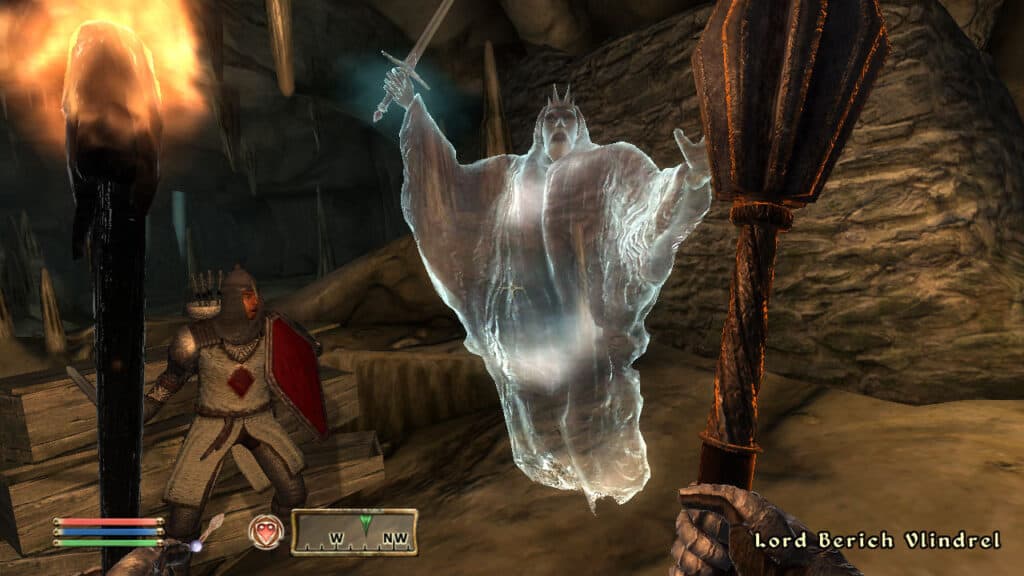
- Release Date — March 20, 2006
- Release Platform — Xbox 360, PC
- Metacritic Score — 94 (Universal Acclaim)
Bethesda’s Elder Scrolls series existed long before Oblivion, but the fourth game in the franchise’s arrival on a home console via the Xbox 360 would make both Bethesda and The Elder Scrolls series much more well-known. In an era where Japanese developers had pretty much cornered the market on RPGs, Oblivion showcases the genius of Western developers in combining RPG progression and quests with massive open-worlds an freeform exploration.
26. Gears of War
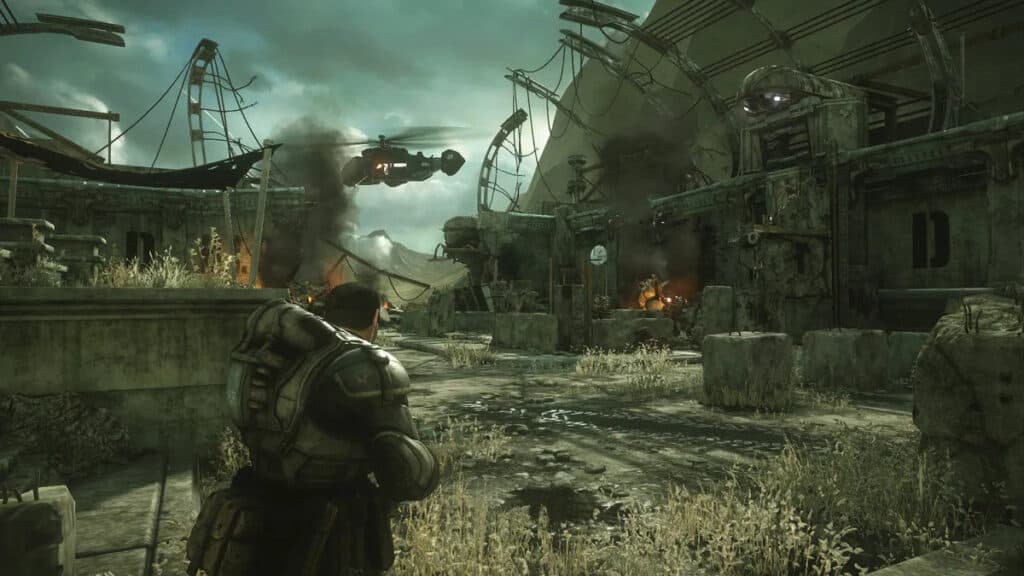
- Release Date — November 7, 2006
- Release Platform — Xbox 360
- Metacritic Score — 94 (Universal Acclaim)
The first Gears of War would be a nice placeholder on the Xbox 360 until the arrival of Halo 3, becoming just as important a franchise to the console’s success as Microsoft and Bungie’s groundbreaking FPS. Though both titles are shooters, Gears swaps Halo‘s first-person perspective for third-person and places a greater emphasis on moving from cover-to-cover, blending mechanics from Resident Evil 4 with other more traditional third-person action games to great effect. With an excellent single-player campaign, ability to play through the title in co-op, and some excellent competitive multiplayer, its no wonder Gears of War became another billion-dollar franchise.
25. Chrono Cross
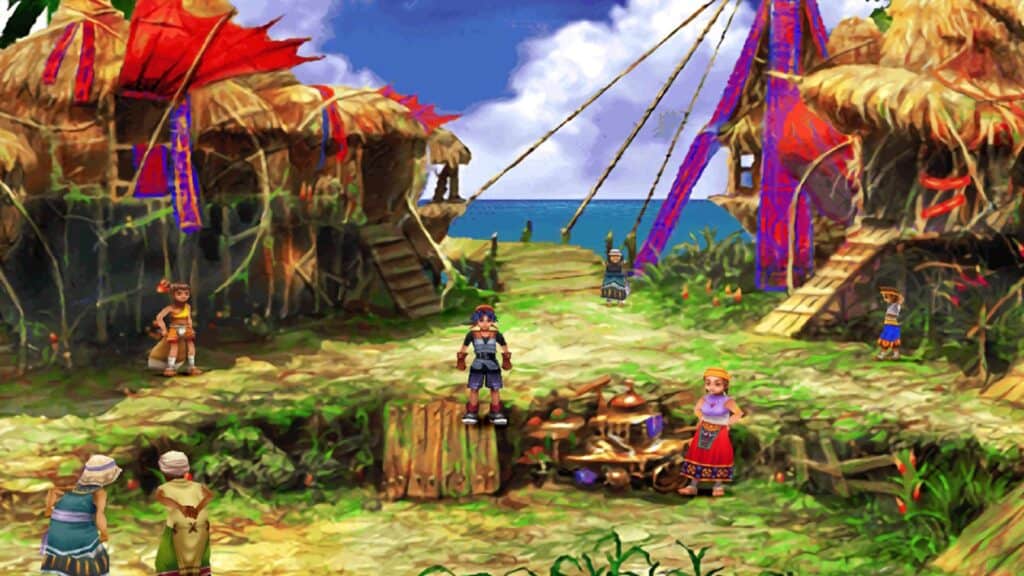
- Release Date — August 15, 2000
- Release Platform — PlayStation
- Metacritic Score — 94 (Universal Acclaim)
The ending to Chrono Trigger is decidedly open, leaving plenty of potential for a sequel or spin-off featuring characters from the beloved RPG. Rather than approach the series in that way for its sequel, Square thinks outside the box and delivers an incredibly satisfying RPG that connects to the events of Chrono Trigger through alternate timelines and dimensions. Many fans were disappointed at Chrono Cross‘ lack of any overt connection to its legendary predecessor, but the game still showcases Square’s chops at crafting excellent RPGs during the era.
24. Devil May Cry
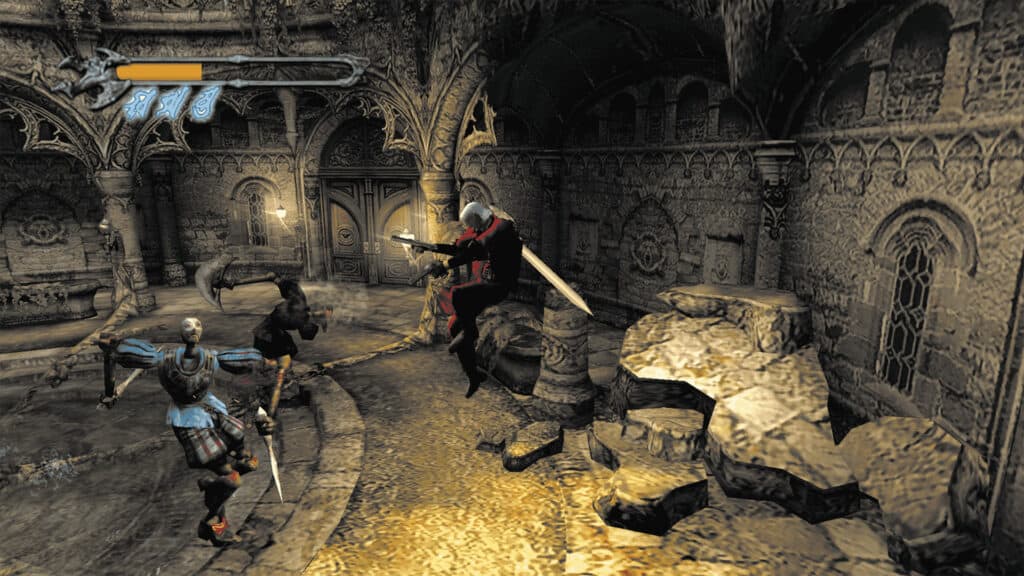
- Release Date — October 16, 2001
- Release Platform — PlayStation 2
- Metacritic Score — 94 (Universal Acclaim)
Long before God of War and Bayonetta would come along and redefine the character-action genre, Devil May Cry would invent it on the PlayStation 2. Coming from Resident Evil mastermind Shinji Mikami, Devil May Cry was originally one of several iterations of Resident Evil 4 before the game finally settled on the form it took at release. It makes perfect sense for Devil May Cry to become its own game, as the stylish action-adventure title has plenty of meat on its bones as a standalone title, and the game’s hero Dante is now a popular Capcom protagonist in his own right.
23. Final Fantasy IX
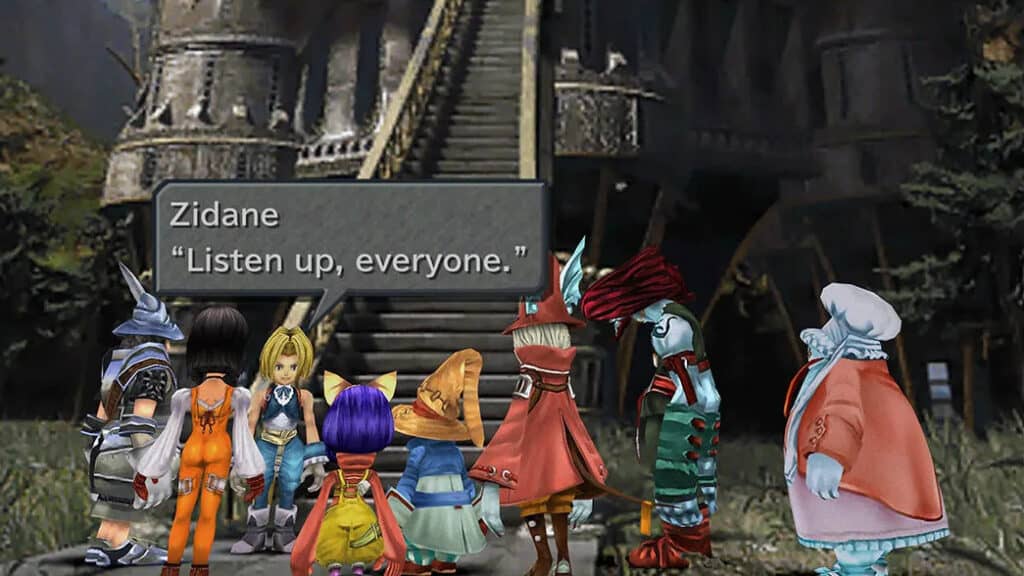
- Release Date — November 13, 2000
- Release Platform — PlayStation
- Metacritic Score — 94 (Universal Acclaim)
The final game in the Final Fantasy series for the PlayStation is an homage to the series’ past and a clear love letter to the franchise. There’s a reason that Final Fantasy creator Hironobu Sakaguchi claims Final Fantasy IX to be one of his favorite titles in the series (and the last where he would serve a direct role as producer), and it likely boils down to how the game feels like a classic Final Fantasy title while still introducing its own unique and heartfelt story and meaningful updates to the mechanics.
22. The Legend of Zelda: Twilight Princess
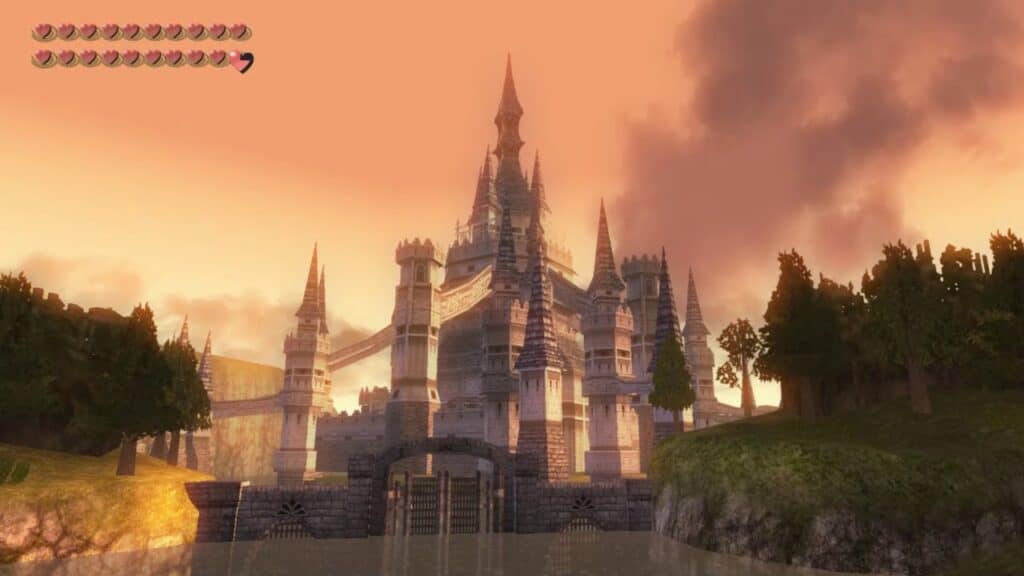
- Release Date — November 19, 2006
- Release Platform — GameCube, Wii
- Metacritic Score — 95 (Universal Acclaim)
Though the game was released simultaneously on both the GameCube and the Wii, Twilight Princess would be the must-have game for Nintendo’s 7th generation console thanks to the promise of being able to control Link’s sword with the Wii’s motion controls. In practice, “swinging” Link’s sword with the WiiMote was more like “wiggling”, but the adventure at the heart of Twilight Princess is still one of the greatest in the series and a decidedly darker and more adult take on The Legend of Zelda universe and its characters.
21. The Legend of Zelda: Majora’s Mask
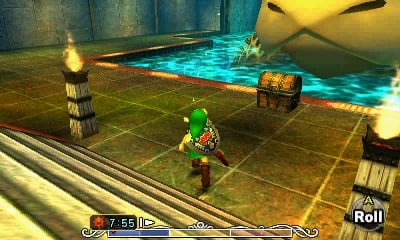
- Release Date — October 25, 2000
- Release Platform — Nintendo 64
- Metacritic Score — 95 (Universal Acclaim)
Speaking of darker takes on the Zelda series, Majora’s Mask takes the template of Ocarina of Time and transports Link into the mysterious land of Termina to help stop an impending apocalypse. Majora’s Mask‘s unique premise and continual countdown timer to the end of the world add an urgency to the game that’s not present in other mainline Zelda entries. Additionally, the game’s excellent dungeon designs and inventive puzzles cement it as a contender for being the fan-favorite game in the franchise.
20. Halo 2
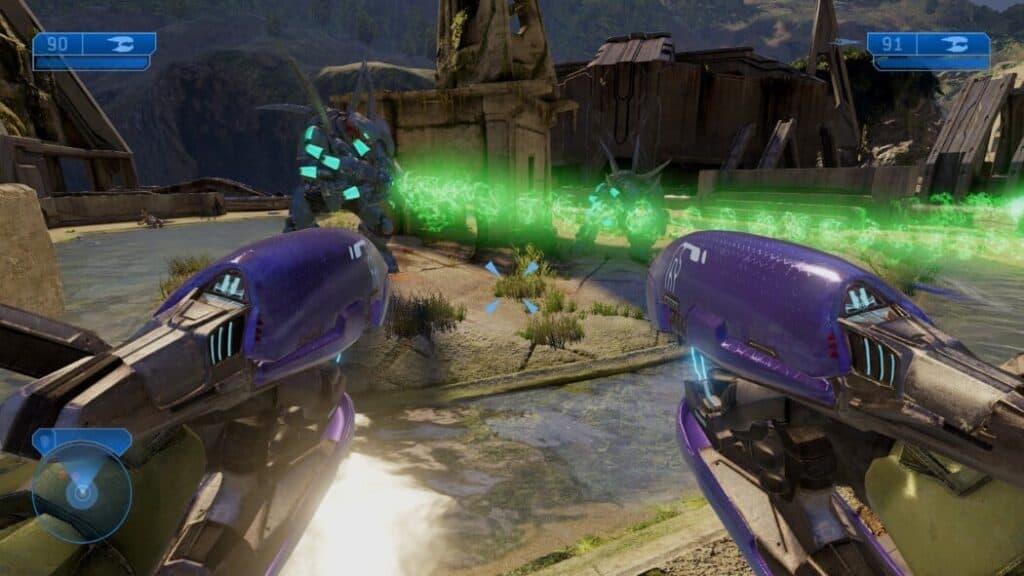
- Release Date — November 9, 2004
- Release Platform — Xbox
- Metacritic Score — 95 (Universal Acclaim)
Although Halo 2‘s campaign was met with something of a mixed reception due to its cliffhanger ending, the same can’t be said of the multiplayer. Halo 2 is the game that helped launch Xbox Live, making the Xbox a must-have console for online gaming. The second game in the franchise would end up becoming one of the best-selling games that year, and its importance in making online functionality a must-have feature in home consoles can’t be overstated.
19. Gran Turismo 3: A-Spec
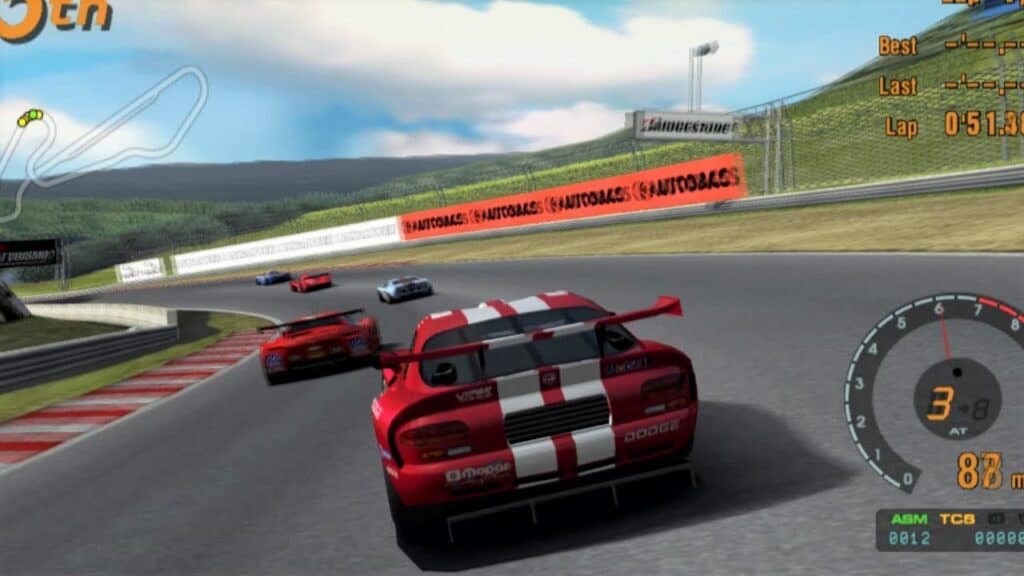
- Release Date — July 9, 2001
- Release Platform — PlayStation 2
- Metacritic Score — 95 (Universal Acclaim)
Gran Turismo‘s transition to the PlayStation 2 would only serve to make the game even better-looking. Similarly, the first two games in the series on the PS1 pushed the console to its limit in terms of graphical fidelity, and Gran Turismo 3 was no different. As one of the early PS2 titles, Gran Turismo 3 wasn’t just a great racing game. It was the conversation piece you’d put on to convince your friends of the PS2’s power.
18. LittleBigPlanet
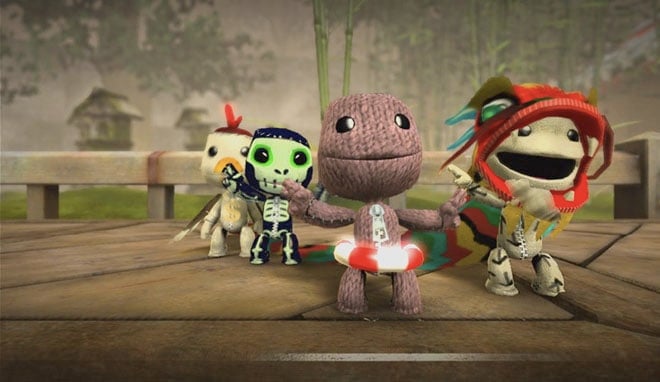
- Release Date — October 27, 2008
- Release Platform — PlayStation 3
- Metacritic Score — 95 (Universal Acclaim)
The first LittleBigPlanet is a hugely important game thanks to how it inspired an entire generation of creators. The game’s platforming is charming yet simple, but it’s the impressive suite of level creation tools and the ability to share those creations online that make it one of the decade’s legendary games. Without LittleBigPlanet, it’s likely we wouldn’t have the same kind of game creation tools available as part of massive online platforms like Fortnite or Roblox.
17. Grand Theft Auto: Vice City
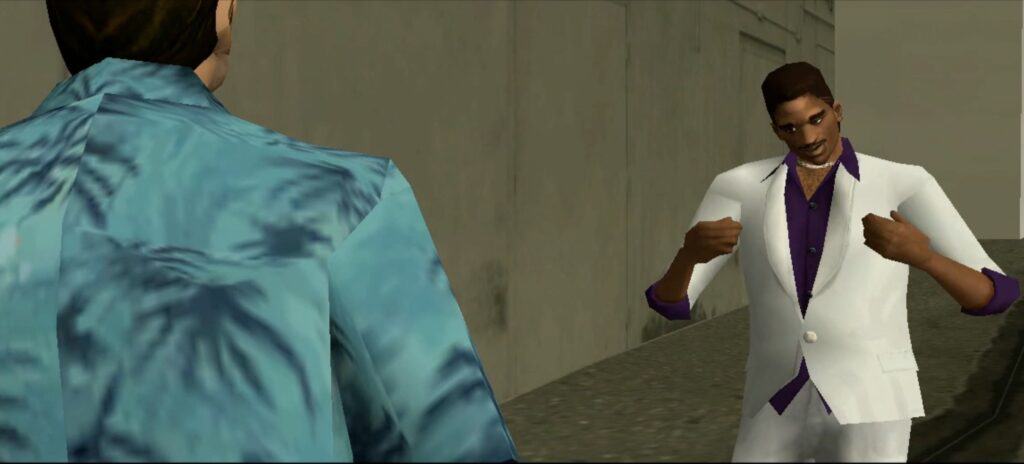
- Release Date — October 29, 2002
- Release Platform — PlayStation 2
- Metacritic Score — 95 (Universal Acclaim)
More than just a sequel, Grand Theft Auto: Vice City takes everything great about GTA III and makes it even better. The game’s 1980s setting is the perfect playground for the series’ comedic and satirical take on pop culture and crime, and the enhancements that Vice City makes to the gameplay make it more than just a new coat of paint. And, the game’s soundtrack is perhaps one of the greatest collections of licensed music ever compiled.
16. Grand Theft Auto: San Andreas
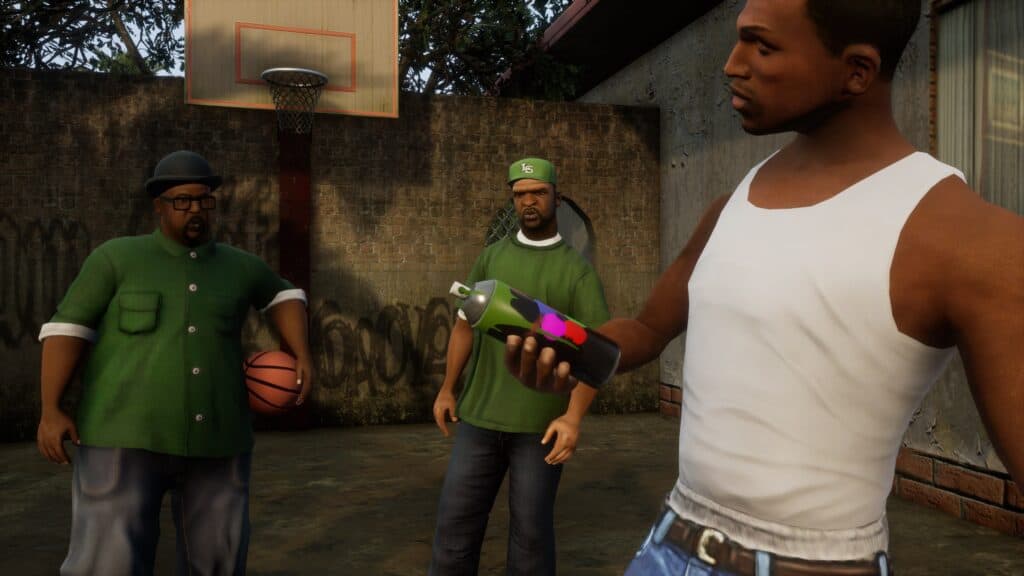
©A screenshot for Grand Theft Auto San Andreas The Definitive Edition.
- Release Date — October 26, 2004
- Release Platform — PlayStation 2
- Metacritic Score — 95 (Universal Acclaim)
Like Vice City before it, San Andreas takes the GTA III formula to new heights in a new setting. Swapping the neon-soaked streets of a fictional 1980s Miami for the gritty and grim city of Los Santos (an analogue for the gang-ridden south central LA of the early 1990s), San Andreas evolves the hints of RPG character progression present in the other PS2 GTA games to become a full-on crime life-simulator. Perhaps the best feature it improves on is the map, which is three times larger than any used in the series up to the point of its release and features plenty of biome diversity in which to cause mayhem.
15. Baldur’s Gate II
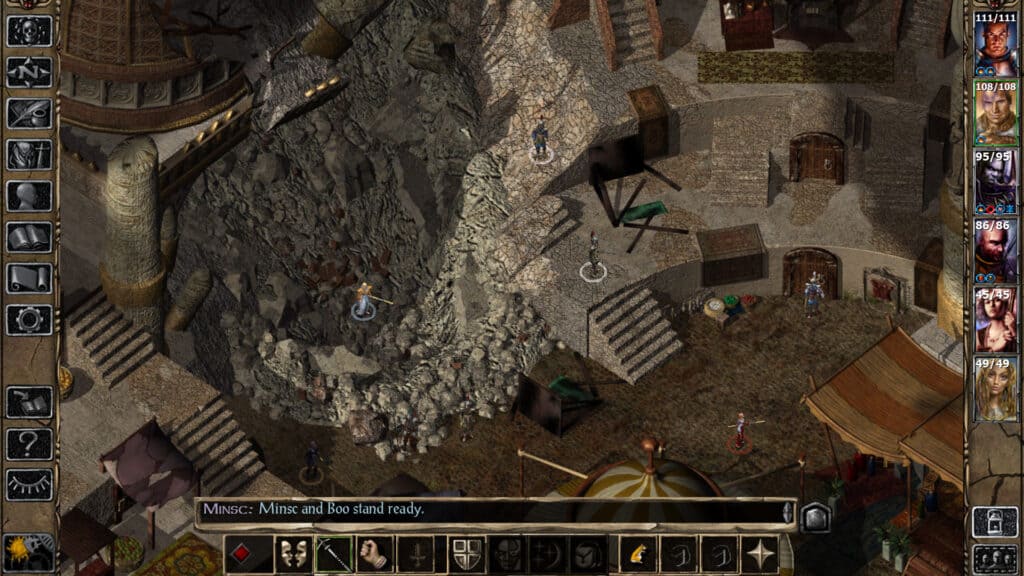
- Release Date — September 24, 2000
- Release Platform — PC
- Metacritic Score — 95 (Universal Acclaim)
Like the best sequels do, Baldur’s Gate II takes everything about the original and makes it bigger and better. Though many fans prefer the characters and writing of the original over the sequel, there’s little denying the refinements to the gameplay that BioWare sprinkled in throughout the title. Along with its predecessor, Baldur’s Gate II lays the foundation for the modern CRPG.
14. Metal Gear Solid 2: Guns of the Patriots
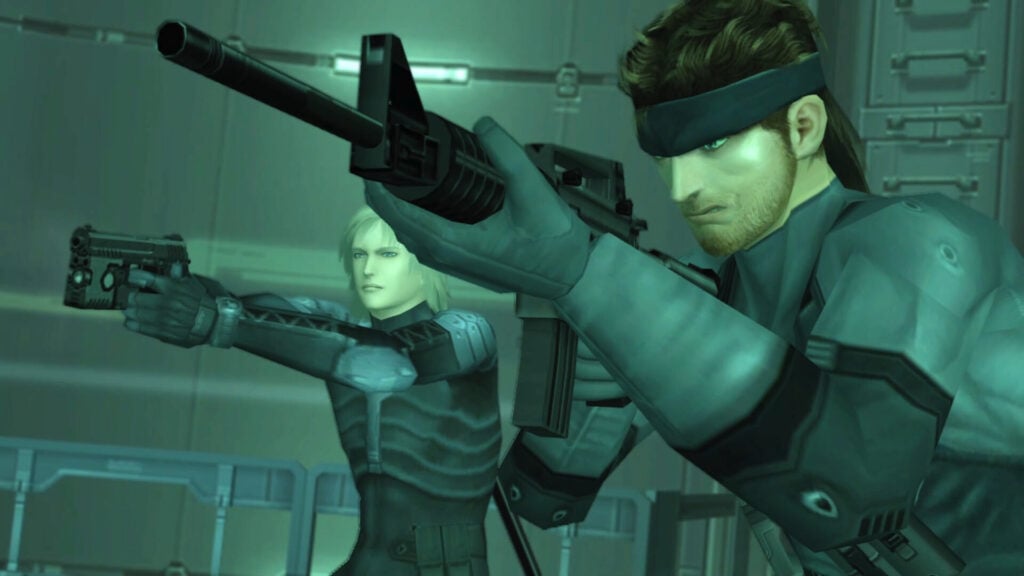
- Release Date — November 12, 2001
- Release Platform — PlayStation 2
- Metacritic Score — 96 (Universal Acclaim)
The success of the original Metal Gear Solid made its sequel one of the most anticipated games of all time. And, of course, in true Hideo Kojima fashion, the game pulls the rug out from under players’ feet. After spending the game’s prologue playing as Solid Snake, the protagonist switches to newcomer Raiden. This move would end up being hugely controversial, but in retrospect Metal Gear Solid 2 is still an incredible game that evolves the stealth action formula of its predecessor.
13. The Legend of Zelda: The Wind Waker
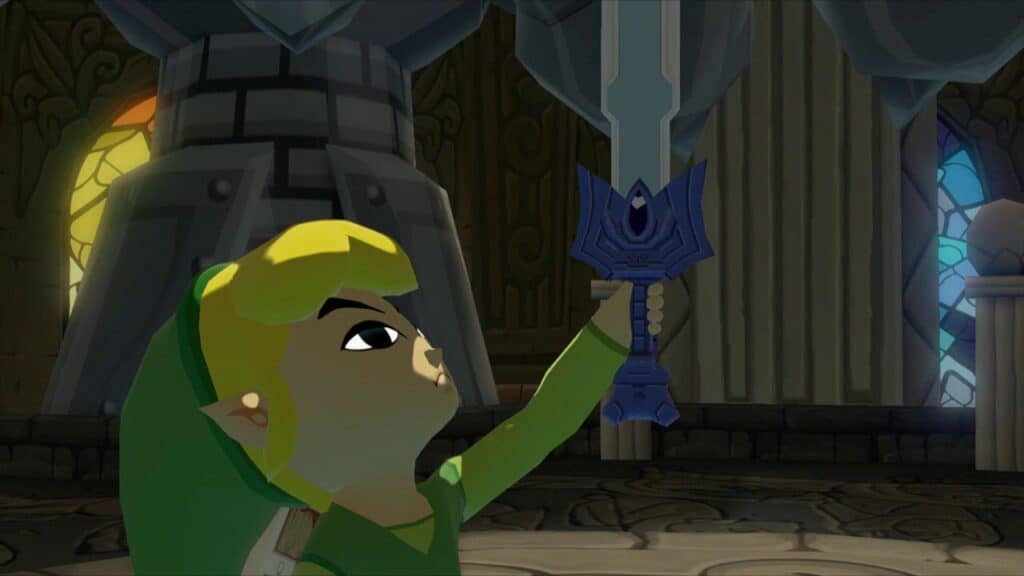
- Release Date — March 24, 2003
- Release Platform — GameCube
- Metacritic Score — 96 (Universal Acclaim)
Speaking of controversy, many longtime Zelda fans were extremely unhappy with the reveal of Wind Waker. Thankfully, the title would prove to be one of the greatest mainline Zelda games. Not only does Wind Waker feature some near-perfect 3D Zelda gameplay, its open-world exploration and sailing prove to be a meditative experience. Unsurprisingly, the game’s charming cel-shaded art style continues to age gracefully in comparison to the other early 3D Zelda titles.
12. The Orange Box
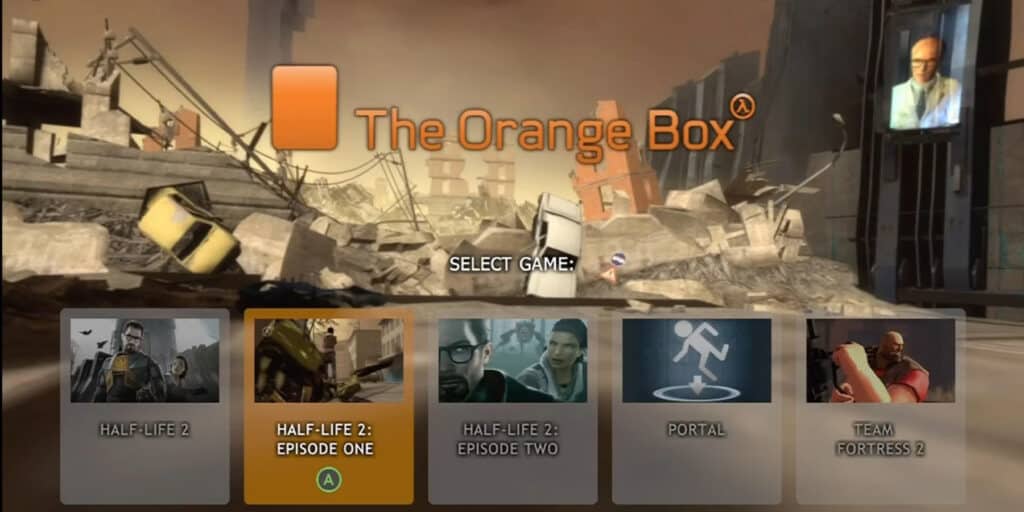
- Release Date — October 10, 2007
- Release Platform — Xbox 360, PC, PlayStation 3
- Metacritic Score — 96 (Universal Acclaim)
Simply put, The Orange Box is quite possibly the best value in gaming. Not only does Valve’s groundbreaking collection include the full Half-Life 2 experience, it introduces the world to two of the company’s all-time greatest games. Putting out a Half-Life 2 collection and calling it a day would’ve been enough for most companies. Not for Valve, though. The Orange Box contains the world’s introductions to both Portal and Team Fortress 2, both of which could earn their own spot on this list.
11. Resident Evil 4
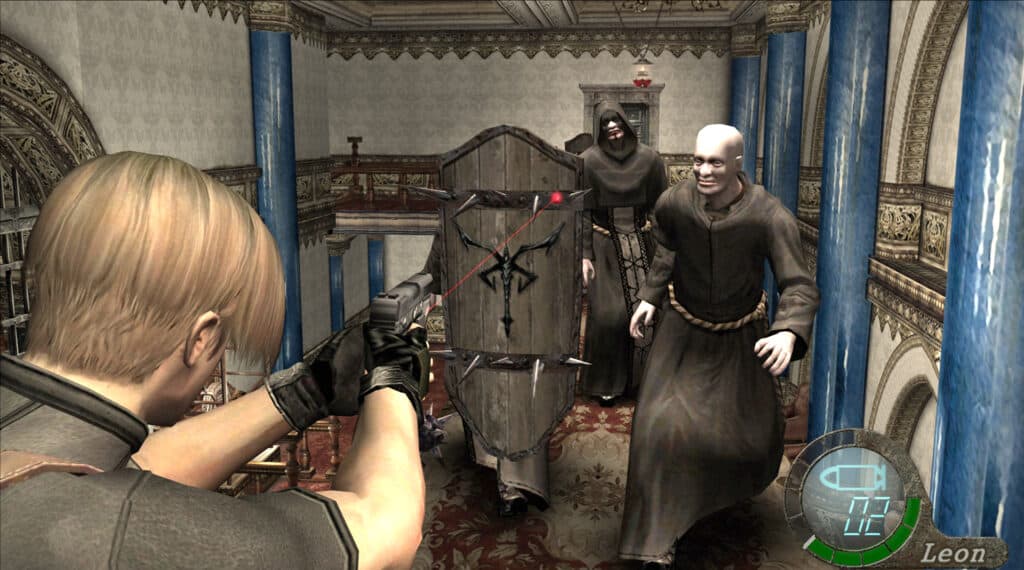
- Release Date — January 11, 2005
- Release Platform — GameCube
- Metacritic Score — 96 (Universal Acclaim)
Resident Evil 4 isn’t just a great Resident Evil game, it’s one of the most important action games ever. The title completely redefines the Resident Evil series moving forward while also providing the template for almost every other third-person action game with its over-the-shoulder camera. Further, RE4‘s dalliances into RPG progression and upgrades give the game exponentially more replay value than the original trilogy.
10. Uncharted 2: Among Thieves
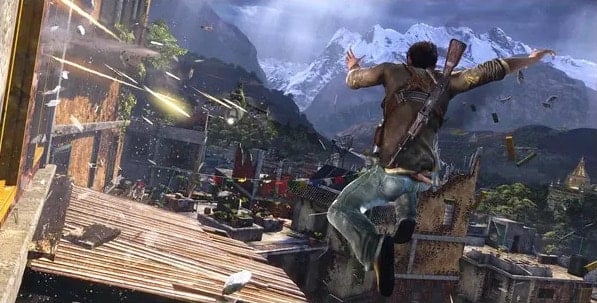
- Release Date — October 13, 2009
- Release Platform — PlayStation 3
- Metacritic Score — 96 (Universal Acclaim)
The first Uncharted is a great game, but the second title would be the reason that many players picked up a PS3. The game’s setpiece moments alone are worth the price of admission, but Uncharted 2 tightens up both the platforming and shooting to become arguably the greatest title in the original trilogy of Uncharted games.
9. BioShock
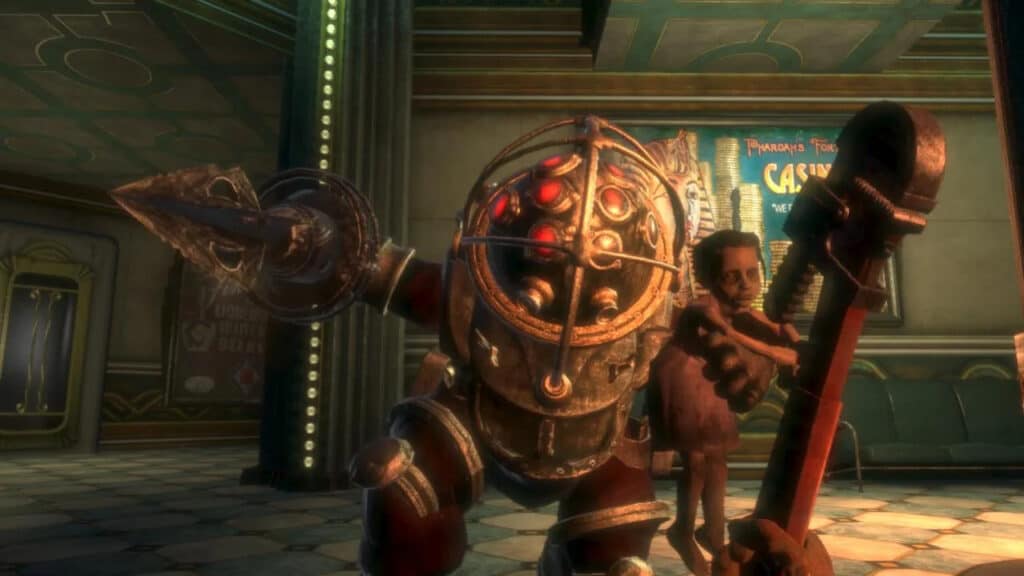
- Release Date — August 21, 2007
- Release Platform — Xbox 360, PC
- Metacritic Score — 96 (Universal Acclaim)
The spiritual successor to System Shock, BioShock might be one of the most important FPS titles ever. Not only does the game elevate the art of environmental storytelling, it gives the player a level of agency that was previously unheard of. The BioShock series is known for mixing immersive sim gameplay with competent FPS mechanics, and the first entry is perhaps the best example of this blend in the series. BioShock has it all — excellent gameplay, a compelling story, freedom of choice, and a jaw-dropping ending.
8. Half-Life 2
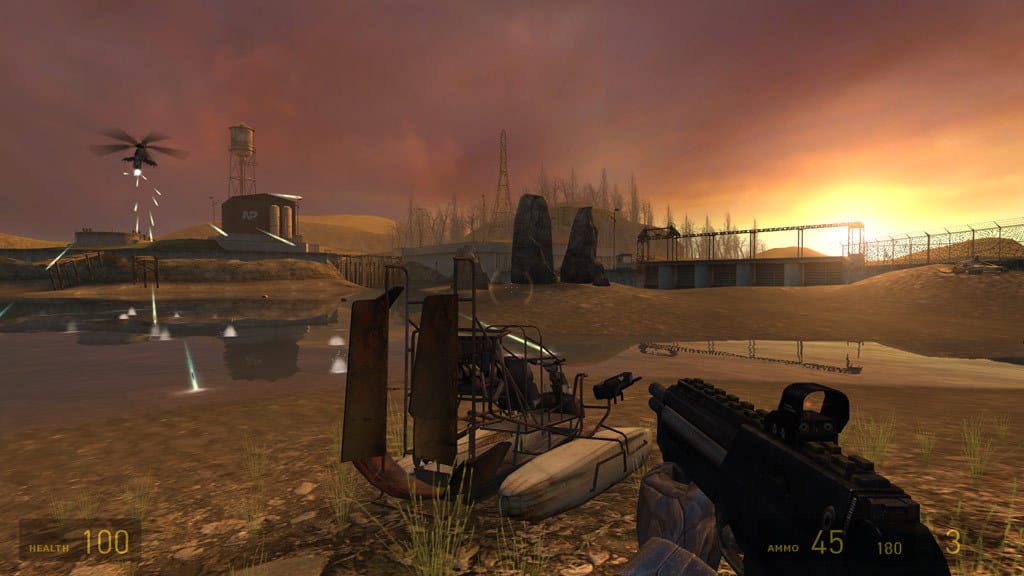
- Release Date — November 16, 2004
- Release Platform — PC
- Metacritic Score — 96 (Universal Acclaim)
Topping what many consider to be the most important FPS ever made is no easy feat, but Valve isn’t just any company. For the (for now) conclusion to Gordon Freeman’s tale, players get to take the fight to the Combine itself and help repel the alien occupation of Earth. Along the way, the adventure features some truly astounding spectacle (as well as some genuinely terrifying sections), but it’s the ingenious blending of gameplay and story that help Half–Life 2 retain legendary status.
7. NFL 2K1
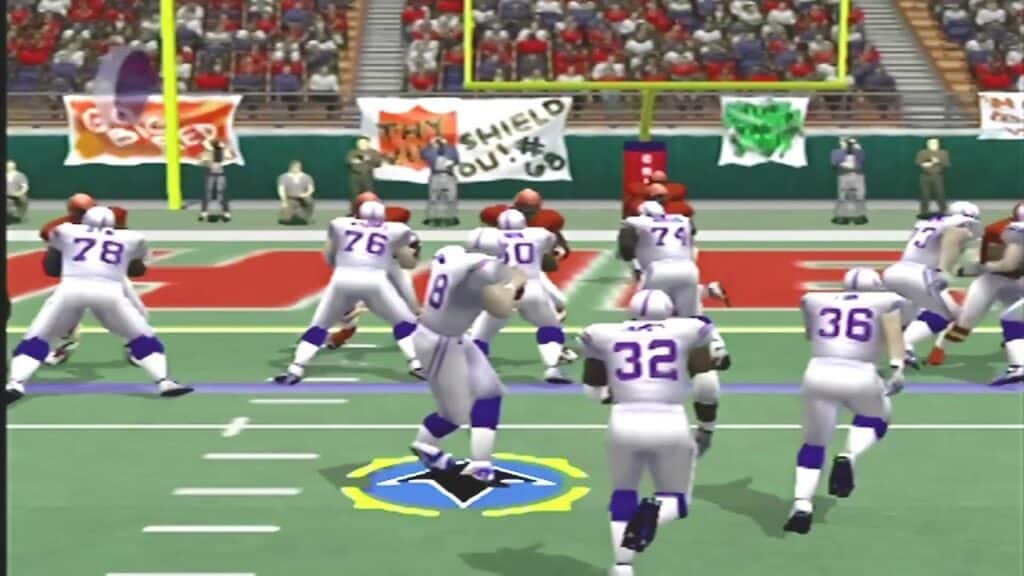
- Release Date — September 7, 2000
- Release Platform — Dreamcast
- Metacritic Score — 97 (Universal Acclaim)
NFL 2K1 is a bittersweet title to reflect on. On the one hand, the game is one of the best football simulations ever made. On the other, it’s the last game in the excellent NFL 2K series before EA acquired exclusive rights to the NFL license. Although it’s difficult to play on modern hardware without an emulator, a matchup in NFL 2K1 is peak sports gaming.
6. Halo: Combat Evolved
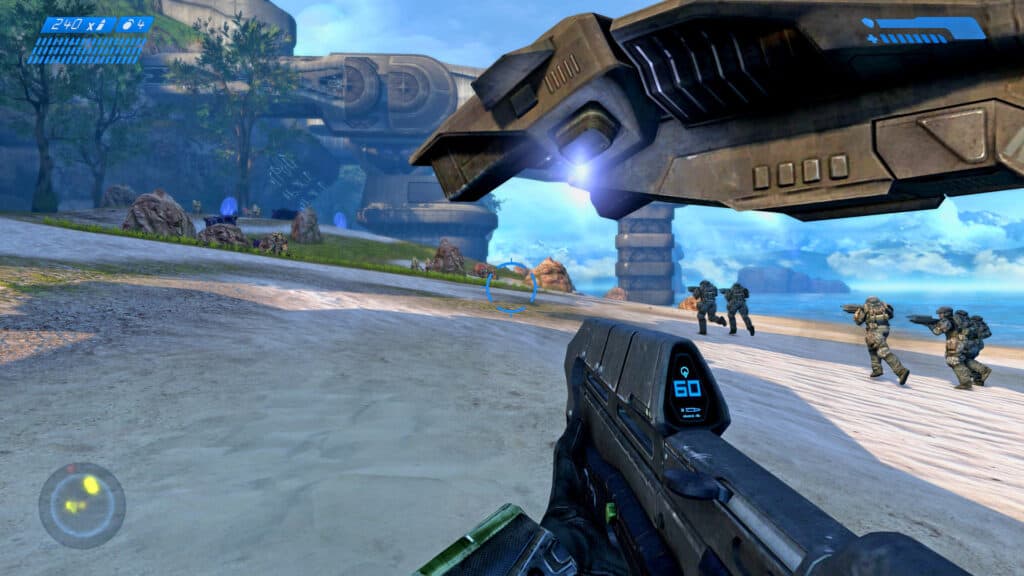
- Release Date — November 15, 2001
- Release Platform — Xbox
- Metacritic Score — 97 (Universal Acclaim)
The original Halo was THE killer app for the Xbox, driving millions of players to grab a console from Microsoft. Halo‘s exclusivity on the Xbox worked in its favor, though, as the console was the only hardware capable of facilitating LAN matches with up to 16 players. The local multiplayer of Halo is the stuff of legend, and it’s also a crucial component of the Xbox’s success.
5. Grand Theft Auto III
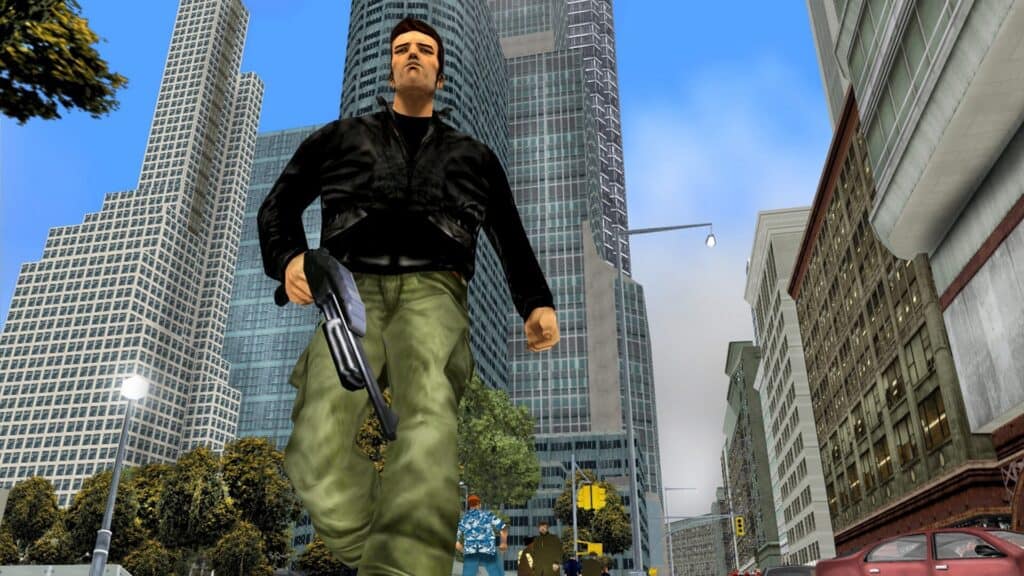
- Release Date — October 22, 2001
- Release Platform — PlayStation 2
- Metacritic Score — 97 (Universal Acclaim)
The arrival of Grand Theft Auto III in 2001 completely took the world by storm. Here was a series that had previously featured rudimentary 2D overhead graphics making the transition to a fully-realized open-world 3D sandbox. It’s a gamble that paid off handsomely for Rockstar. Not only did GTA III single-handedly establish the modern tenets of open-world game design, it helped start the journey of the Grand Theft Auto franchise toward becoming one of the most successful IPs of all time.
4. Metroid Prime
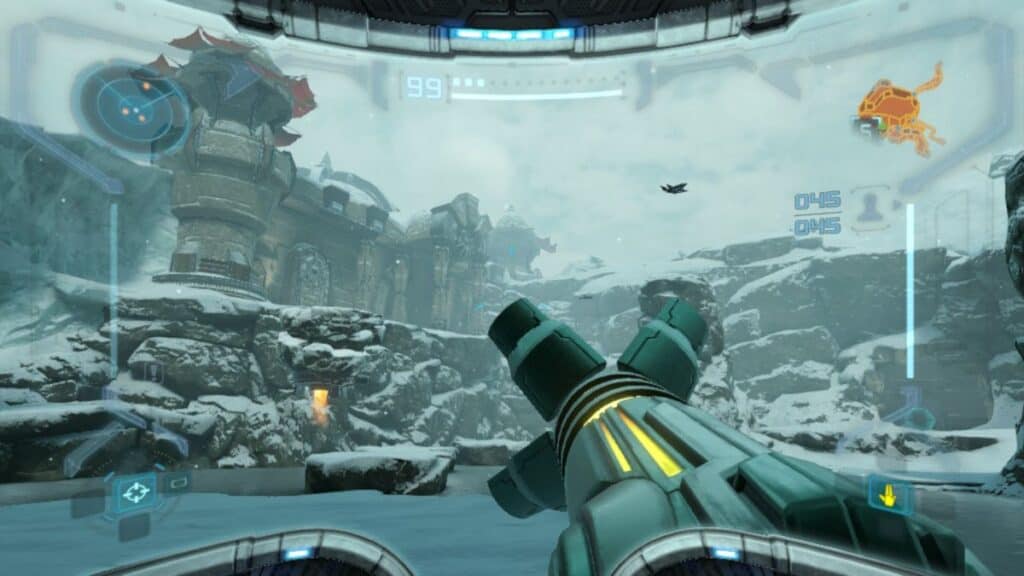
- Release Date — November 17, 2002
- Release Platform — GameCube
- Metacritic Score — 97 (Universal Acclaim)
If anything, Metroid Prime proves that a 3D Metroidvania is indeed possible. The core elements of a Metroid game — exploration, ability-gated progression, shooting combat –are all present, only switched to a full-3D first-person perspective. It’s an experiment that pays off, providing players with what is still arguably the greatest Metroid game other than Super Metroid.
3. Tony Hawk’s Pro Skater 3
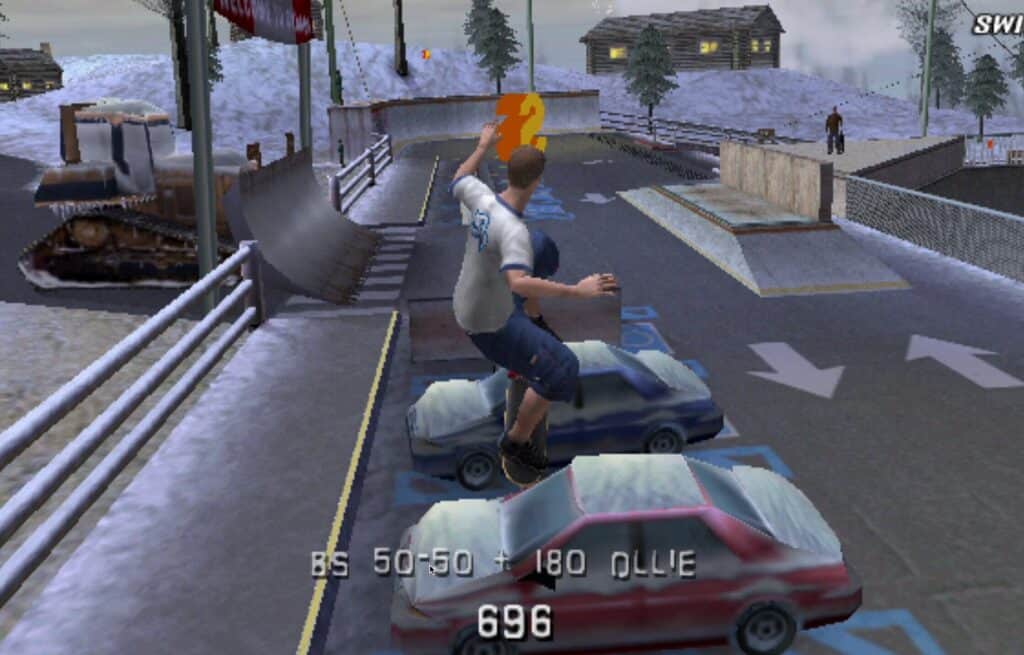
- Release Date — October 30, 2001
- Release Platform — PlayStation 2
- Metacritic Score — 97 (Universal Acclaim)
Tony Hawk’s Pro Skater 3 is the last of the great Tony Hawk games, featuring an incredible soundtrack and some nice refinements to the gameplay that allow for greater combo stacking and score counter inflation than ever before. It’s arguably the last game int he series before any game with the Tony Hawk branding went off the rails, making it a title marking the end of an era of incredible extreme sports games.
2. Super Mario Galaxy
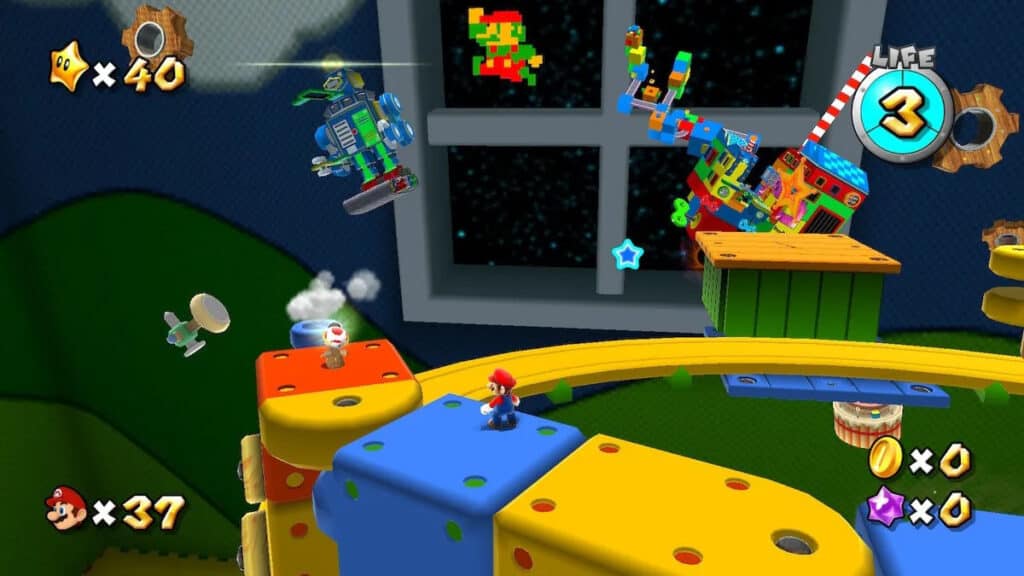
- Release Date — November 12, 2007
- Release Platform — Wii
- Metacritic Score — 97 (Universal Acclaim)
It’s not that Mario Sunshine was a bad game, by any means. It’s just that the title felt like a lateral move in comparison to Super Mario 64. Conversely, Super Mario Galaxy kicks off a golden era of 3D Mario games culminating in the excellent Super Mario Odyssey. Rather than copy the Super Mario 64 formula with better graphics and calling it a day, Super Mario Galaxy makes excellent use of its space setting and the Wii’s motion controls to truly bend the mind regarding what’s possible in a 3D platformer.
1. Grand Theft Auto IV
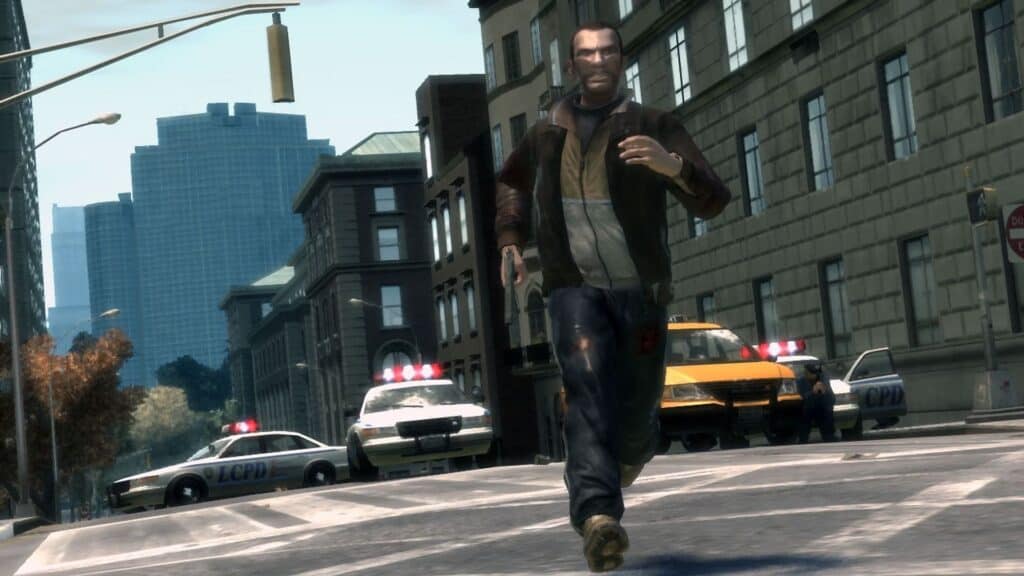
- Release Date — April 29, 2008
- Release Platform — Xbox 360, PlayStation 3
- Metacritic Score — 98 (Universal Acclaim)
The first official sequel to the Grand Theft Auto series since its revolutionary third entry would not disappoint. In addition to bringing players back to the series’ excellent fictional rendition of New York City, Liberty City, players get treated to a story that is arguably still the best in the series. Niko Bellic’s tale of chasing redemption in the “American Dream” is both hilarious and heartbreaking at times, confronting the player with the reality of trying to be successful in the United States as an immigrant. Sometimes, a life of crime is all too easy to slip back into. And in Niko Bellic’s case, it’s also plenty of fun.
The image featured at the top of this post is ©Halo 2 key art.
